From Asiago to Swiss, we’re covering the most popular types of cheese from A to Z in this helpful guide to cheese varieties! There are numerous types of cheese, each with its own unique flavor, texture, and characteristics. In this guide, we focus on some of the most commonly used cheeses, plus our favorite easy recipes that use these different types of cheese!
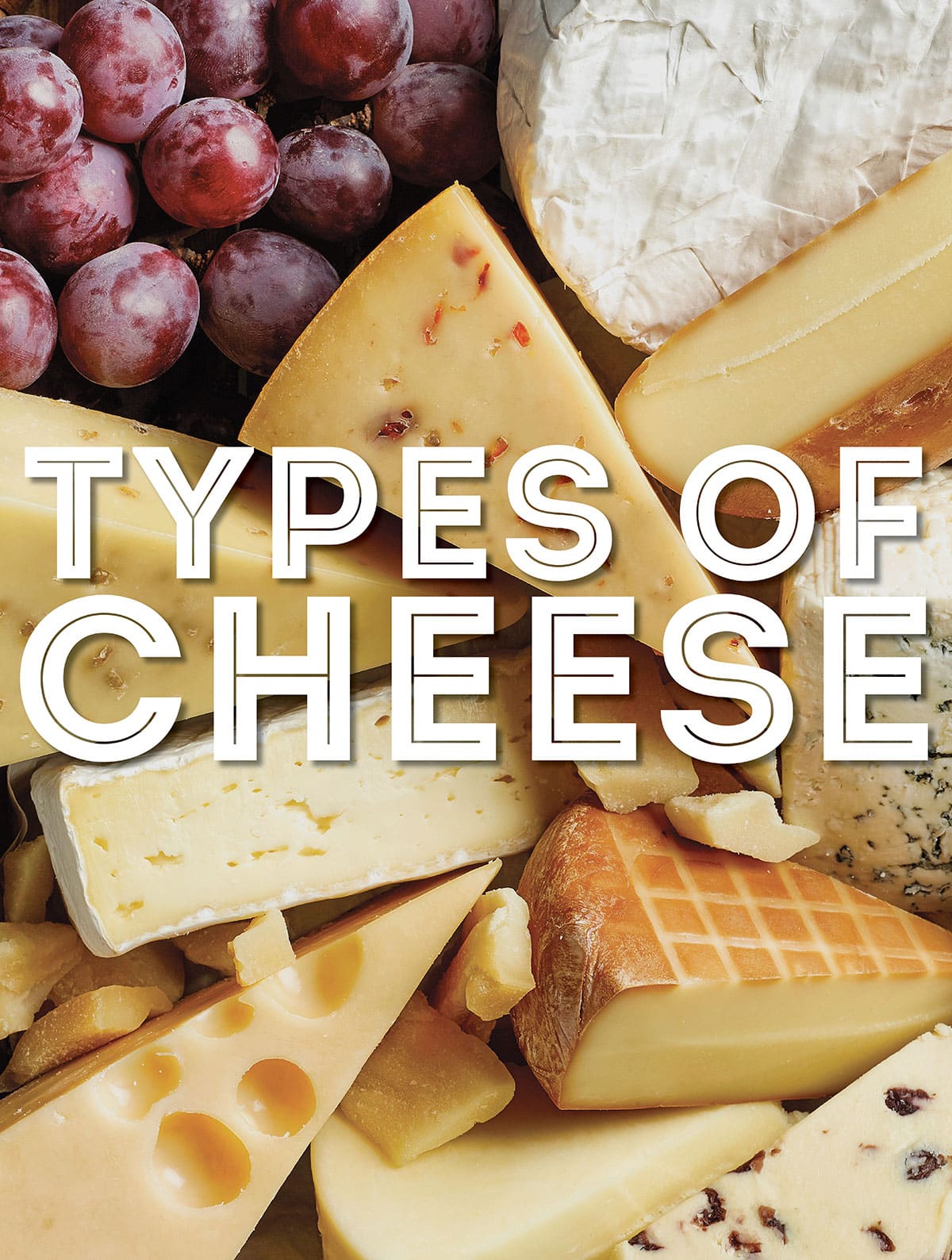
There are nearly 1,800 cheese varieties worldwide. Many are just minor variations to others, but there are a lot of options out there. We won’t try to cover them all, but focus on some of the most popular and commonly used kinds of cheese (and our favorite recipes to use these different types of cheese)!
Cheese trivia!
How many pounds of milk do you need to make a pound of cheese? 3, 5, 8, or 10? (find the answer at the end of this post!)
Cheese Categories
Cheeses varieties can be categorized in many ways. They are often grouped by age, texture, flavor, type of preparation/production, country or region of origin, and type of milk used to create them. Broadly speaking, the US Dairy Association categorizes cheeses into 7 categories:
Hard Cheeses
Hard cheeses are pressed for days to weeks to remove the whey and compact the curd. They tend to have a strong flavor and low moisture content. The aging process removes moisture from the cheese making it harder and drier than soft cheese. Bacteria doesn’t grow well in this dry cheese, so hard cheese tends to store longer than softer types of cheese. From the varieties we highlight in this article these include Cheddar, Gruyere & Parmesan. (These are going to be great contenders for this vegetarian cheese board recipe!)
Semi-Hard Cheeses
Semi-hard cheeses have a lower moisture content than soft cheeses. They are molded and aged under pressure drying them out, but clearly not to the extent of hard cheese varieties. Cheddar, Colby, Edam, Emmental, Gouda, Gruyere, Jarlsberg, and Monterey Jack (the definitive best cheese for nachos) are all semi-hard cheeses.
Soft and Fresh Cheeses
Soft-fresh cheese varieties are not pressed like harder cheeses. Whey is gravity-drained, and the cheese is not age-hardened. This gives the soft-fresh varieties their high moisture content making them spreadable. Types in this article include Cottage Cheese, Cream Cheese, Feta, Mascarpone, Neufchatel, Queso Blanco, and Ricotta among others.
Soft-Ripened Cheeses
Soft-ripened cheeses are noted for the penicillin candidum mold that gives them their hard white “crust”. Think Brie and Camembert!
Pasta Filata
Pasta Filata or Stretched Curd Cheeses are made by soaking the curd in water until it is sufficiently elastic that the cheese can be kneaded and stretched to give it the chewy elastic texture we recognize in Halloumi, Mozzarella, and Provolone among others.
Blue Cheeses
Blue varieties include Gorgonzola, Roquefort, and Stilton. These are made by adding penicillium mold which reacts with the curds to give it a funky taste and distinct blue color.
Processed
For many of us our first thought about processed cheese is artificial and cheap. This isn’t completely fair. Processed cheeses are made by combining and heating natural cheese. While this is an overly simplistic description, the idea is to produce consistent products with specific characteristics. Some processed cheeses are designed to be shelf stable, to have a specific melting point, or certain nutritional contents. The production process also produces consistent cheeses that ensure customers get the same product each time.
Reader rating
“Thank you for this concise and informative post. I learned something new about one of my favorite foods – Cheese! BTW, many (though not all) of these cheeses are available in the U.S. at Trader Joe’s in quantities that are smaller than you might have to purchase at Costco, but still very reasonably priced. It’s worth checking out if there is a Trader Joe’s near you. ” —Jonathan
Types of Cheese
Now that you know a bit about the different categories of cheeses, let’s walk through some of the most popular different cheeses in the world! Click the links below to jump around the article, or scroll to explore all the cheese options!
- American Cheese
- Asiago Cheese
- Blue Cheese
- Brocconcini
- Brie Cheese
- Burrata Cheese
- Butterkäse
- Cabrales
- Camembert Cheese
- Cheddar Cheese
- Colby Cheese
- Cotija Cheese
- Cottage Cheese
- Cream Cheese
- Danish Blue (Danablu)
- Edam
- Emmental
- Feta Cheese
- Fontina Cheese
- Goat Cheese
- Gorgonzola
- Gouda
- Grana Padano
- Gruyere
- Halloumi
- Havarti Cheese
- Hrudka
- Jarlsberg
- Manchego Cheese
- Mascarpone
- Monterey Jack
- Mozzarella
- Muenster Cheese
- Neufchâtel
- Paneer
- Parmesan
- Parmigiano Reggiano
- Pecorino Romano
- Pepper Jack
- Processed Cheese
- Provolone Cheese
- Quark
- Queso Blanco
- Queso Fresco
- Raclette
- Ricotta Cheese
- Romano
- Roquefort
- Sakura
- Sirene
- Stilton
- String Cheese
- Swiss
American Cheese
American Cheese is the second most popular cheese by amount sold in the USA making, up 13% of sales. It is available at every deli counter and is pre-packaged for easy use by several major food producers. It is a great option for heated sandwiches and burgers as it is very creamy and melts well.
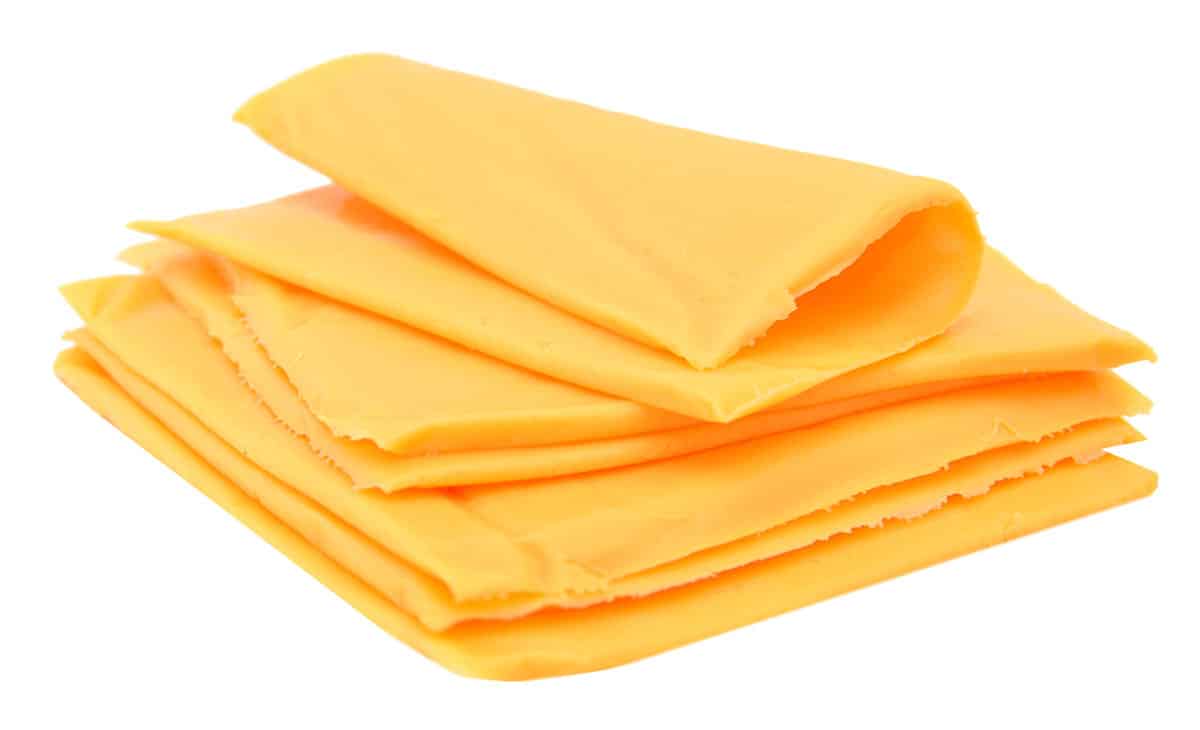
Asiago Cheese
Asiago is an Italian cheese made from cow’s milk. Asiago is sold either aged or immature. Aging can take up to 9 months, and results in a much harder cheese with strong pungent flavor and yellow color. Immature asiago will be off-white with a smoother texture and mild taste. The harder variety goes well on a meat, cheese, and fruit board or crumbled onto pasta. We like it on this Naan Pizza recipe.
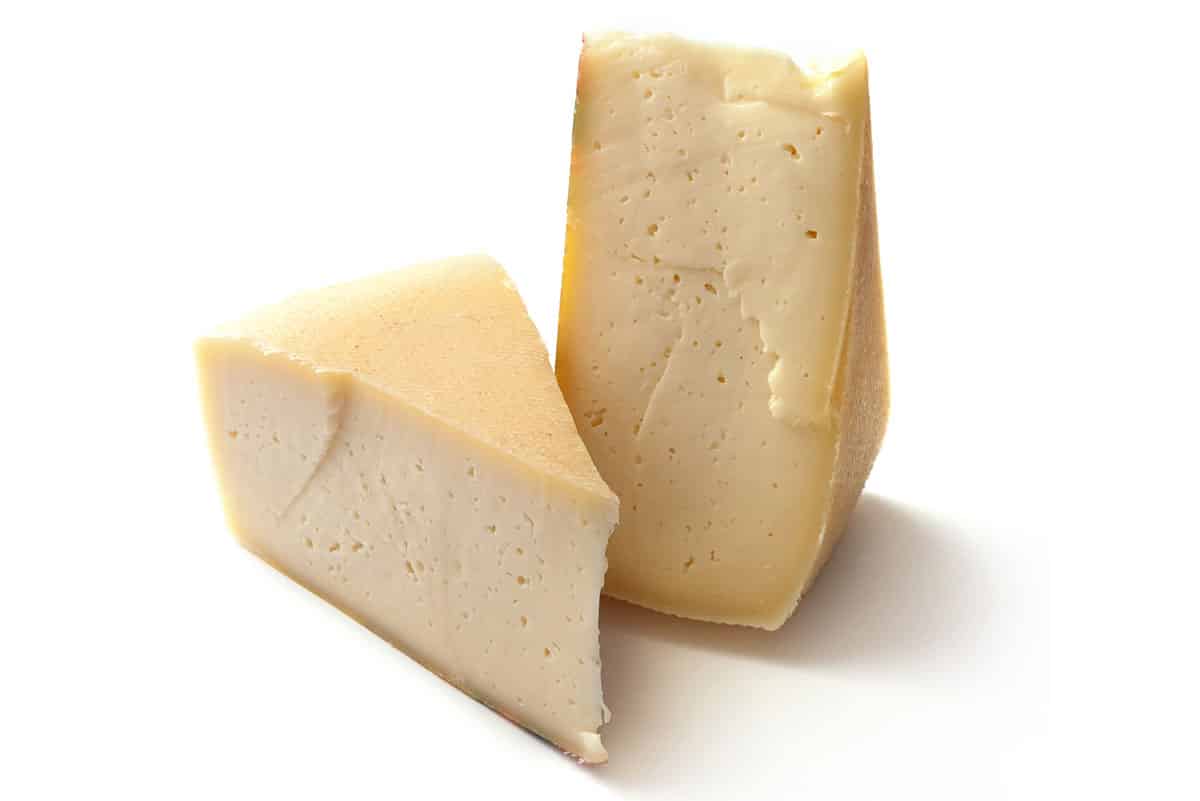
Blue Cheese
Blue Cheese is the name for a family of cheeses easily identifiable by their blue spots and veins caused by the penicillium mold injected into them during production. This mold reacts with the curds to give blue cheese varieties their spicy taste as well as color.
The primary varieties are Roquefort (French), Gorgonzola (Italian), Cabrales (Spanish), Stilton (English), and Danish Blue (Danish). Roquefort is the strongest and Danish Blue the mildest. Blue Cheese is soft and creamy and crumbles easily. People tend to like it or hate it, but if you are in the “like” camp it is great in making blue cheese dressing, crumbled on top of a steak, and of course on a good iceberg lettuce Vegetarian Wedge Salad. Also consider trying any of the blue cheeses with other vegetables like this Roasted Brussels Sprout Salad.
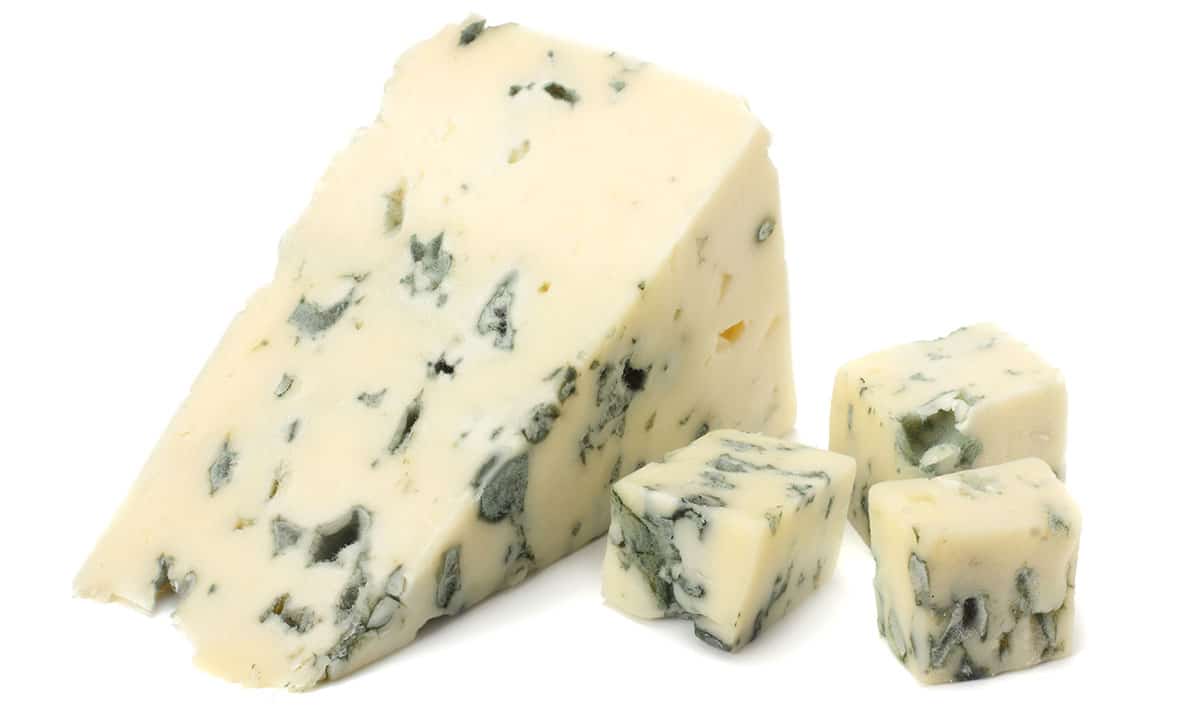
Brocconcini
Brocconcini in Italians simply means “little mouthfuls” or “little bites”. These egg-sized mozzarella balls are native to Naples Italy. As mozzarella, they are white, unripened, sweet, and have a soft spongy texture. They are often eaten whole like one might a hard-boiled egg. Try them whole or cut in this Spiralized Zucchini Caprese Salad.
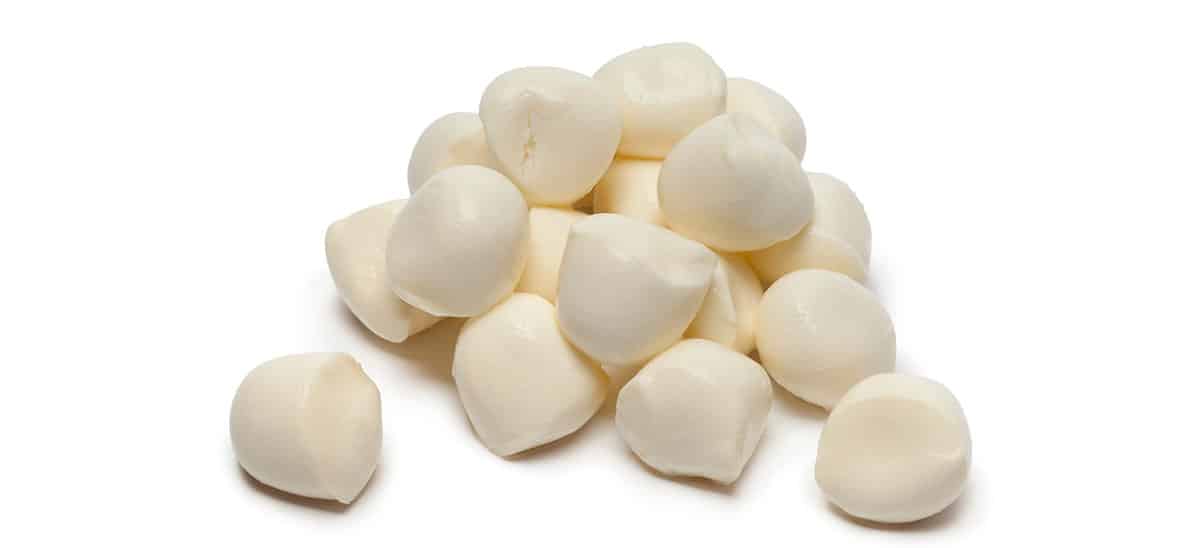
Brie Cheese
Brie doesn’t make the US’s top 5 for sales, but is nonetheless very popular. Brie is soft and silky and comes in a round wheel with a light crust. It is generally eaten at room temperature with crackers or bread, and can almost be spread. It is great as a dessert by itself or in recipes like these Whipped Brie Stuffed Strawberries.
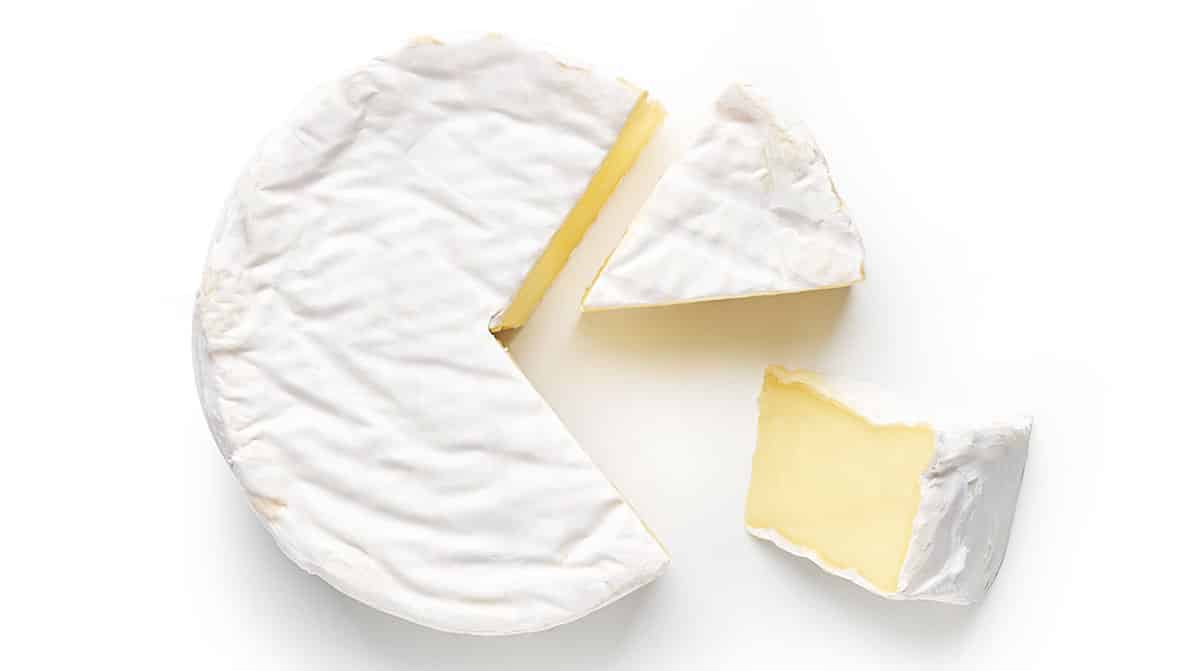
Burrata Cheese
Burrata is a semi-soft white cheese made in Southern Italy using buffalo milk. It resembles mozzarella, but has a soft milky interior. Burrata is normally served at room temperature and is great in a tomato, basil, and Italian bread combination. Burrata, however, is more versatile than just this. It is great on salads and makes a great pizza. Give this Burrata Pizza recipe a try.
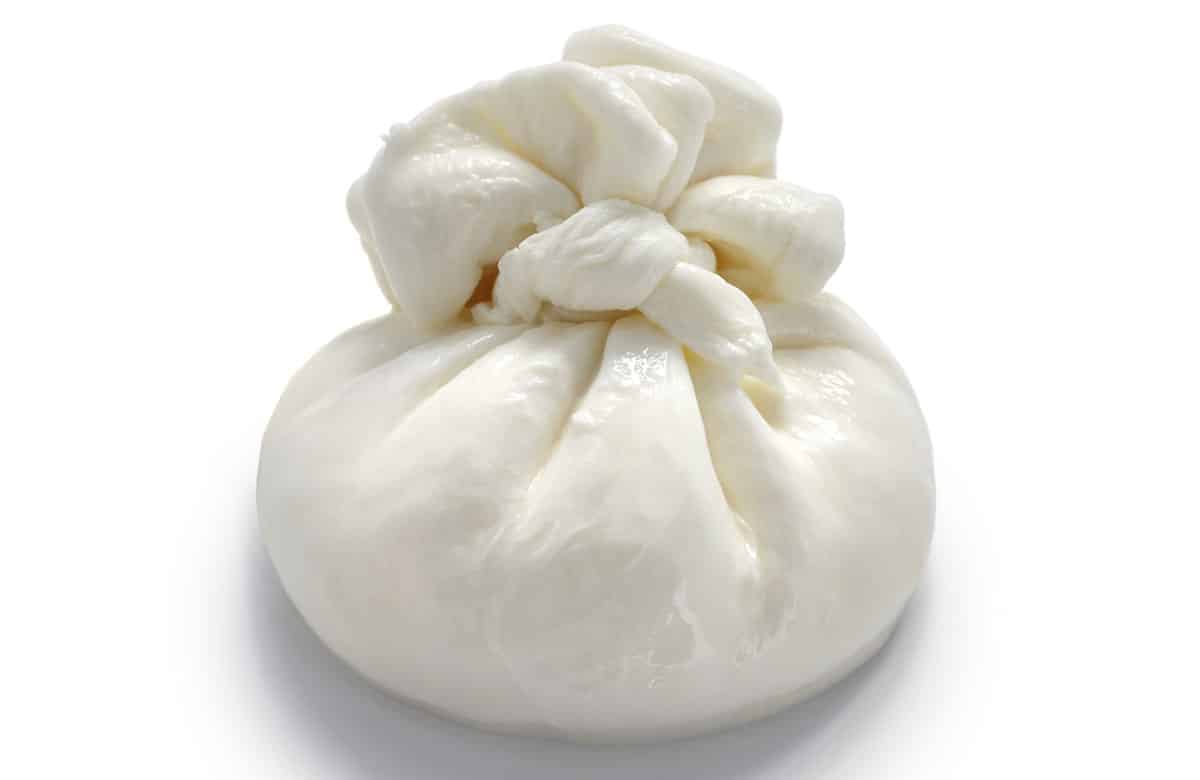
Butterkäse
Butterkase is German for “butter cheese”. It is a semi-soft, mildly salty, smooth & creamy cheese made from cow’s milk. It was developed in Germany in the early 20th Century, but production was brought to Wisconsin by immigrants. Butterkase can be used both on sandwiches and in cooking. The Germans often make a smoked variant further expanding the uses of this cheese.
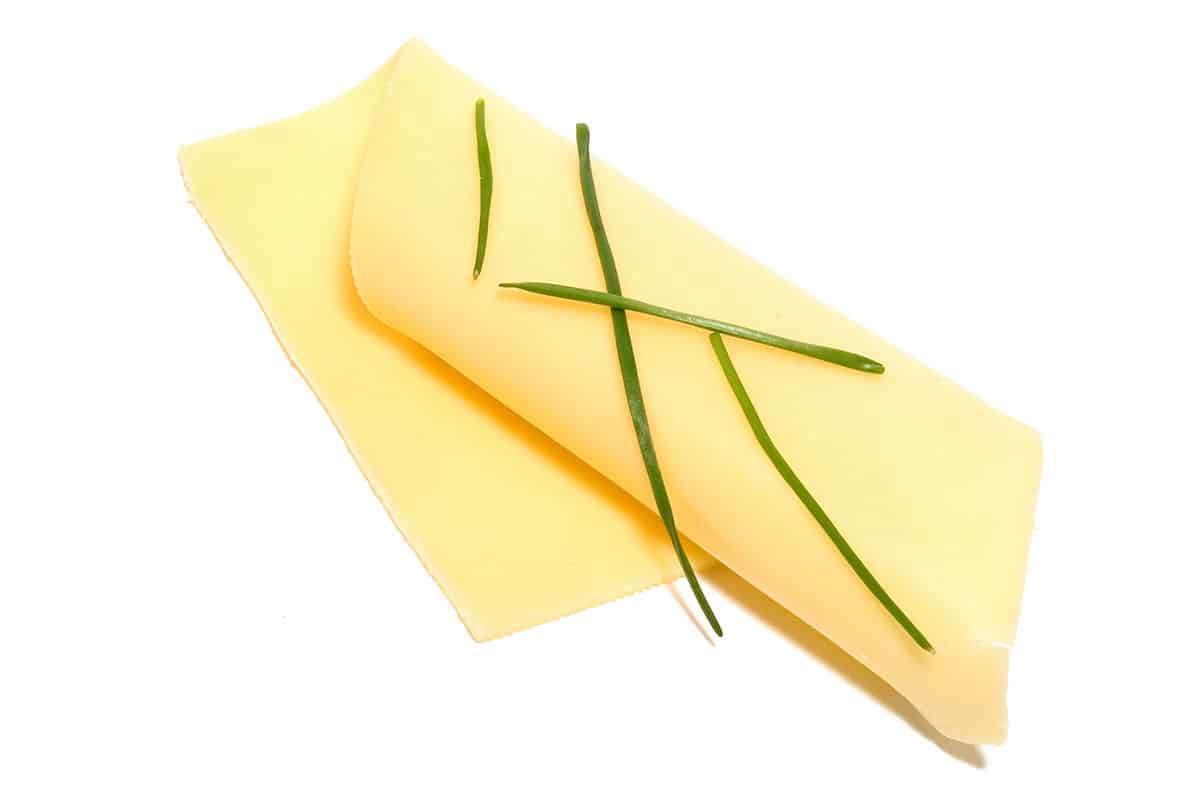
Cabrales
Cabrales is the Spanish variant of blue cheese. It is made exclusively in the Asturias region of Spain under very strict specifications with a few modifications allowed. It can be made solely from unpasteurized cow’s milk or a blend of cow, goat, and sheep’s milk. Regardless of the type of milk used, all the animals must be raised in the Asturias region. Cabrales can be difficult to find, but check international markets or specialty shops. You can use it like you would any of the other blue cheese varieties.
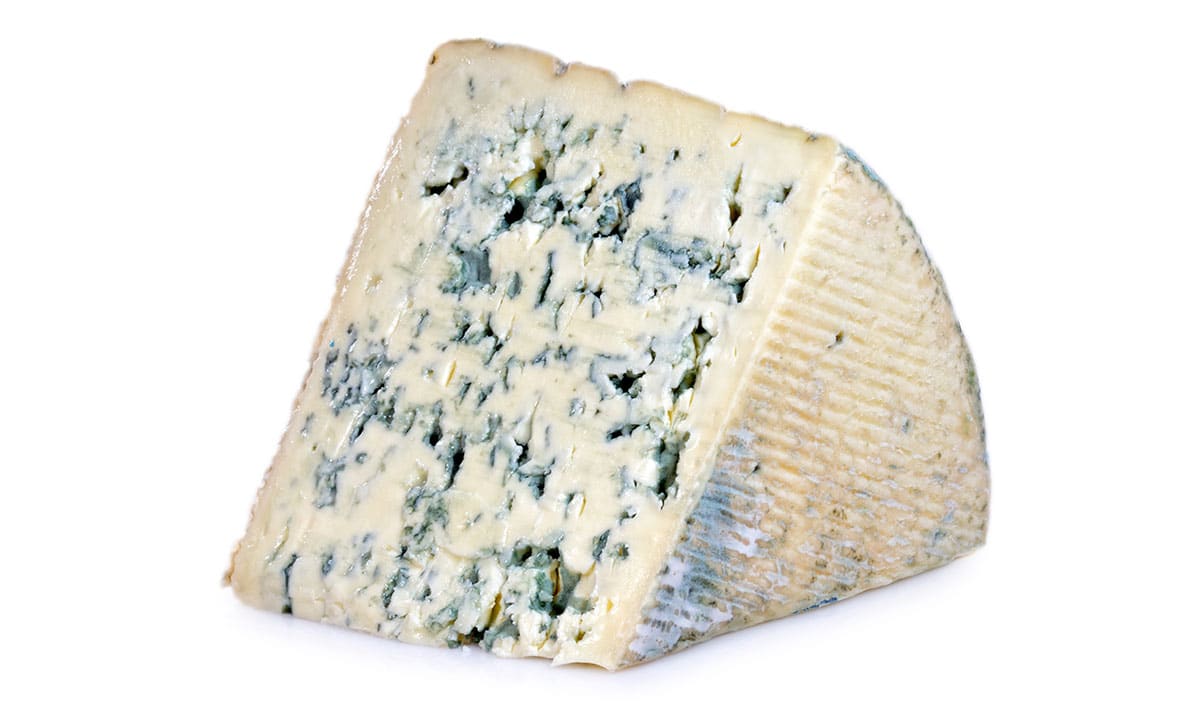
Camembert Cheese
Camembert is a French cheese similar to brie, but known for a more intense flavor and not being as spreadable as brie. Like brie, however, it is still great on crackers and with jam. The cheese improves with age in both flavor and softness. Add Camembert or Brie to your favorite Cheese Board Ideas.
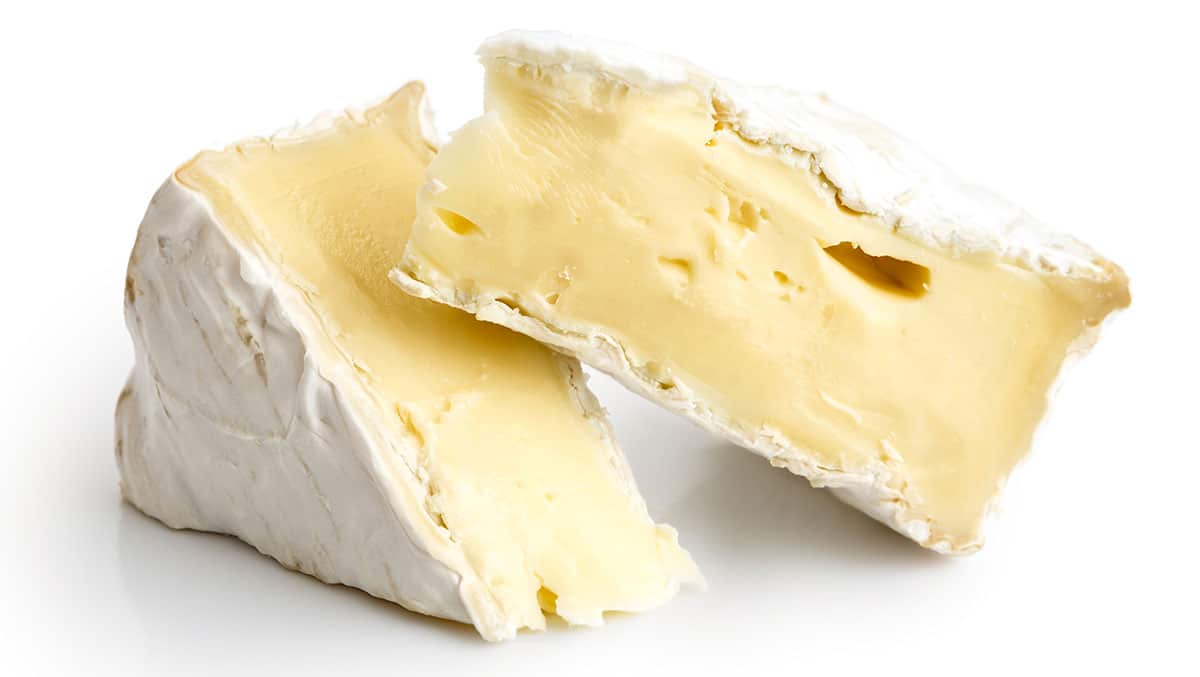
Cheddar Cheese
Cheddar is America’s top selling cheese constituting 19% of all sales. This cow milk cheese originated in England where it was sharp and crumbled easily. In America today cheddar is recognized as mild to sharp and creamy, and has the superpower of melting perfectly on top of a burger. Cheddar cheese originated in England in the 12th century.
Cheddar is a remarkably versatile cheese, and is great in any mac and cheese recipe. Give it a shot in Butternut Squash Mac N Cheese or use white cheddar in this Truffle Mac & Cheese Recipe. It is, of course, great on burgers to include vegetarian burgers like our Portobello Mushroom Burgers. Cheddar is the most common cheese used in making great omelettes, and even most dogs love cheddar (see Barkuterie Board for Dogs!)
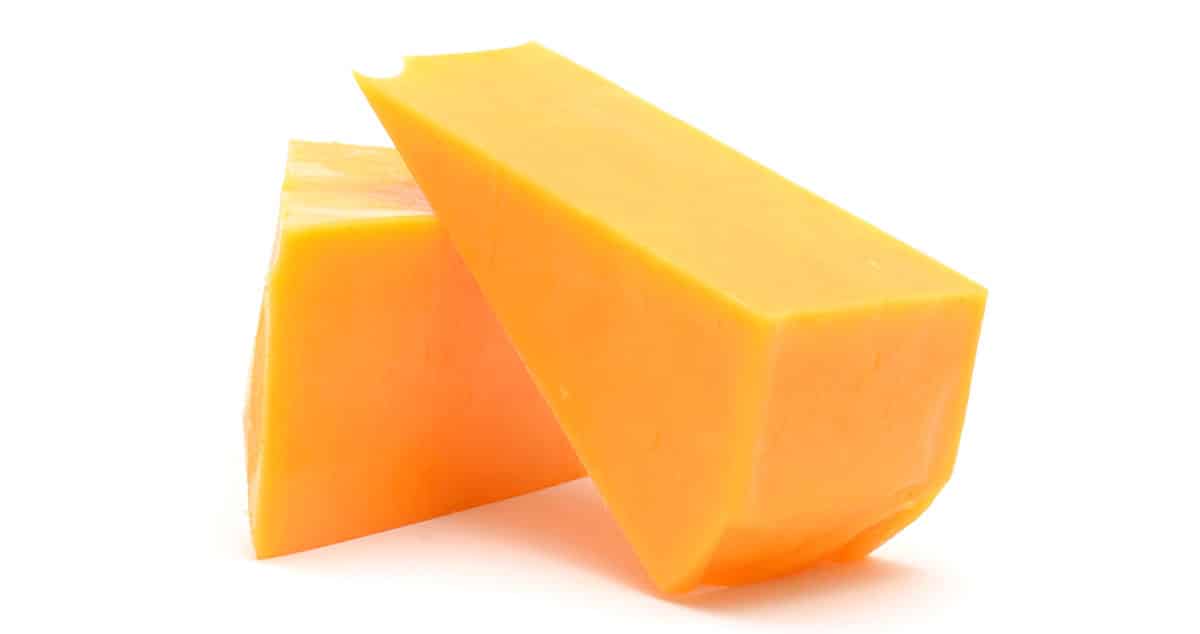
Colby Cheese
Colby is America’s 6th highest selling cheese. Made from pasteurized cow milk, it is a mild cheese that is often combined with other cheese. The most common form of this being Colby-Jack which is derived by combining Colby with Monterey Jack, to make Colby-Jack which is notable for its white and yellow coloring. Colby-Jack is great on sandwiches and melts well (making this a great cheese for nachos). Colby is America’s 6th most produced cheese making up 7% of all cheese production.
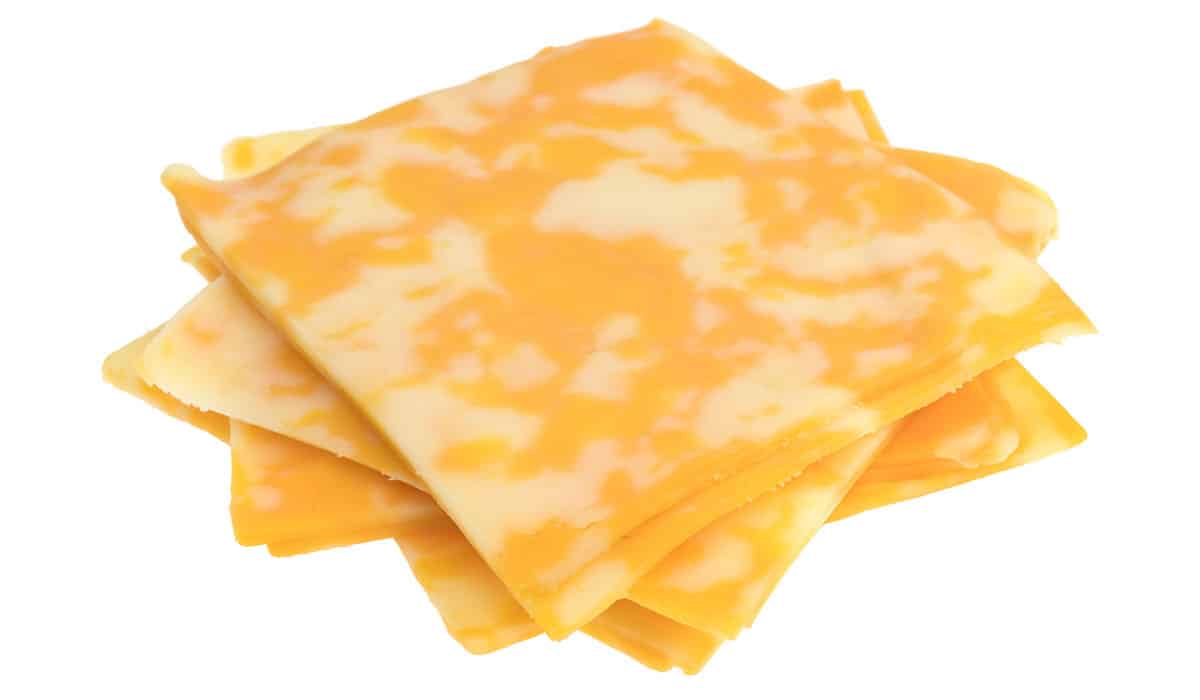
Cotija Cheese
Cotija is a Mexican cheese used extensively in Mexican favorites like tacos, enchiladas, and nachos. It is a crumbly cheese made from cow’s milk with a mild salty flavor. We use it in this Mexican Street Corn Salad. It is a great cold side dish that is easy to make. Bring it along the next time you go to a cookout, but don’t expect to bring any back home.
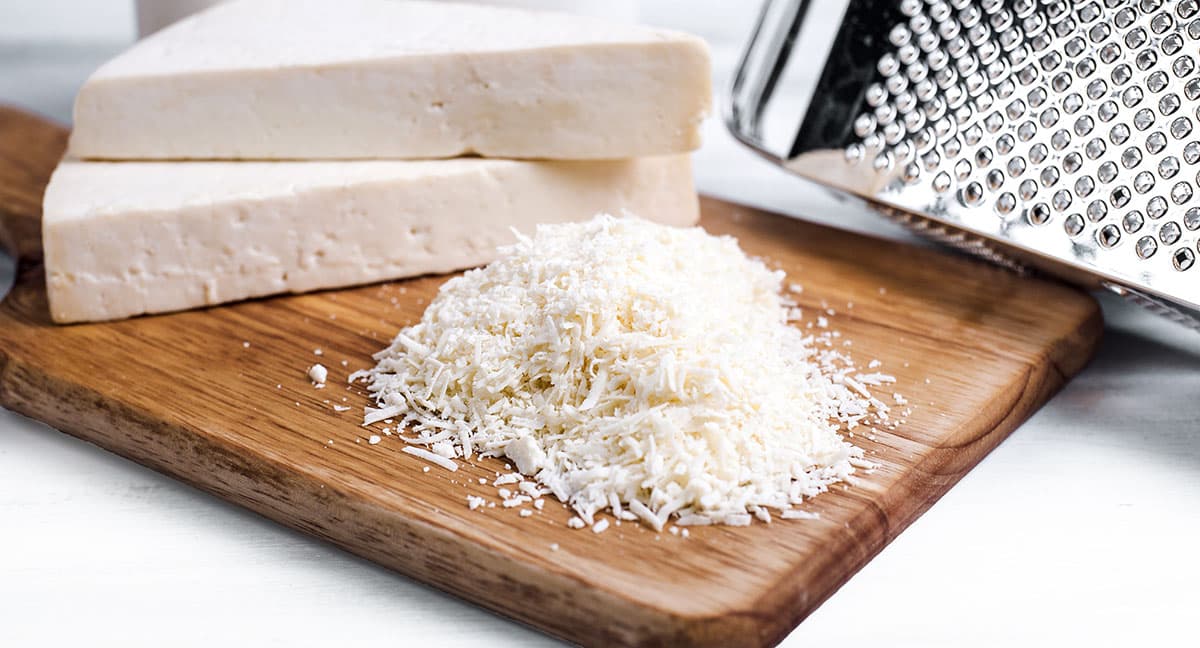
Cottage Cheese
Cottage cheese is an American favorite made from cow’s milk. It is made by separating curds from the whey and is not pressed resulting in its lumpy creamy texture. It is extremely healthy with a 4 oz serving providing about 12 grams of protein and a variety of vitamins and minerals. It is, of course, great eaten right from the carton or with just about any fruit, but it is much more versatile than just that.
Try it in a Cottage Cheese Omelette. Cottage cheese makes great desserts too, our favorite being a good Breakfast Banana Split or Strawberry Cottage Cheese Smoothie.
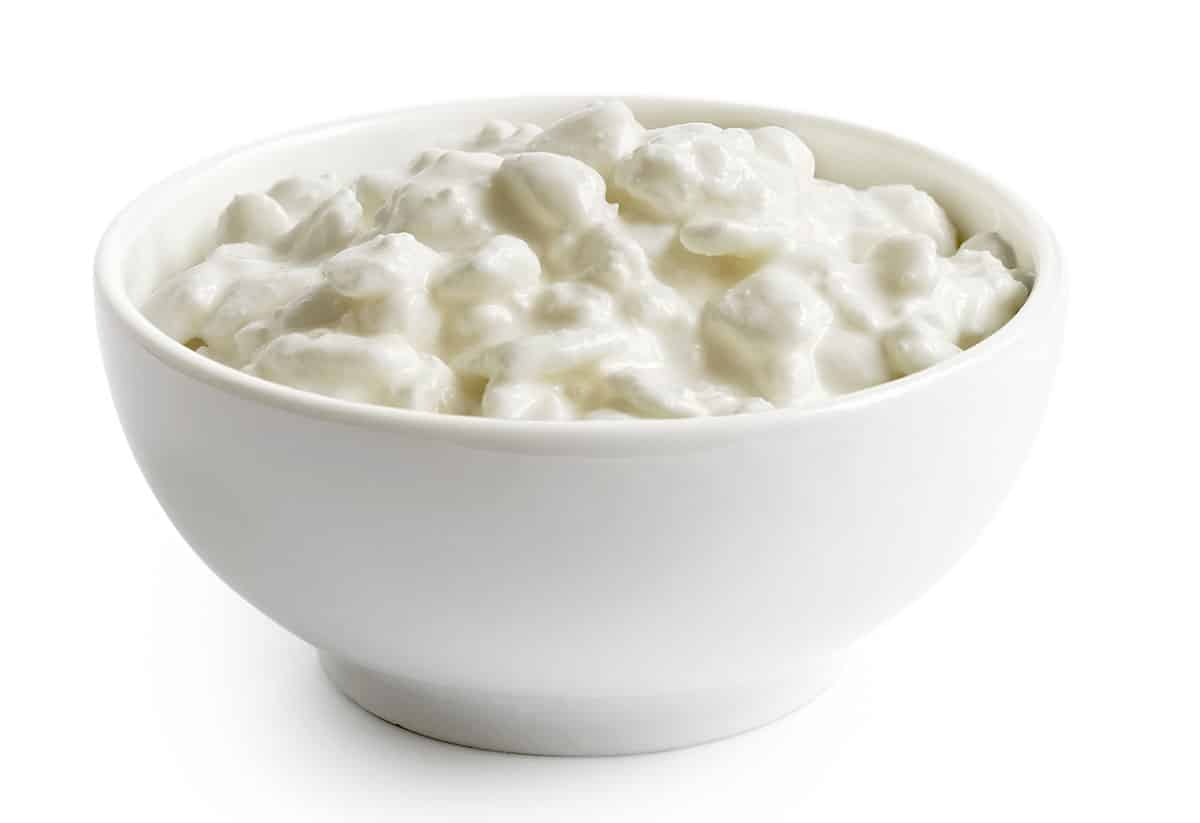
Cream Cheese
So many of America’s favorite cheeses came from outside our borders. This makes sense as we are a young nation and cheese is an ancient food favorite. Cream cheese, however, was invented in Chester New York by Mr William Lawrence in 1872. He knew he was on to something good, so he bought an existing cheese factory and commercialized the creamy spread we love today.
Lawrence used a combination of milk and cream draining off the whey before pureeing the mixture to give us the sweet spreadable cream cheese we love on bagels. The true superpower of cream cheese is its ability to be flavored to taste. While you can buy it this way, you can also make your own home flavored cream cheese (5 ways).
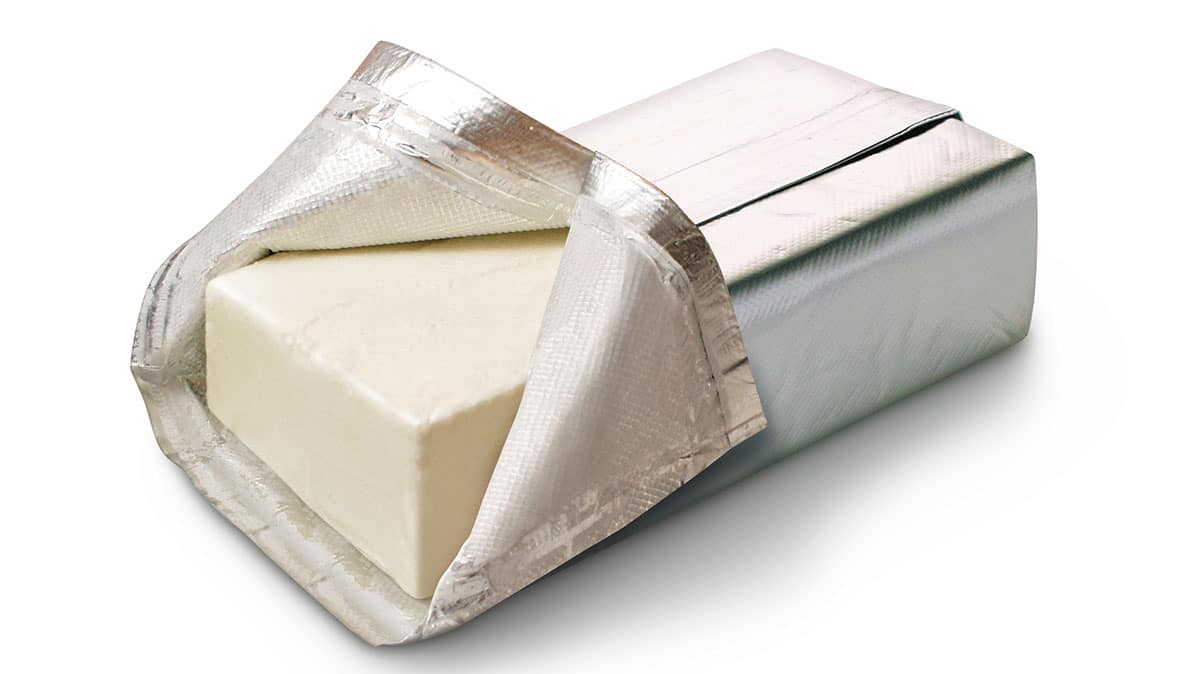
Danish Blue (Danablu)
Danish Blue is probably the most mild of the Blue Cheese variants, so if you are a blue cheese skeptic (or hater) perhaps this one is for you. It was developed in Denmark in the early 20th Century by Marius Boel, so it is a newcomer to the blue cheese family given that Roquefort dates to the 9th Century and Stilton the 18th. Danish Blue is a semi-soft cow’s milk cheese made largely in the same way as other blue cheeses which is to say a needling process is used to ensure proper air flow so that the Penicillium can work its magic.
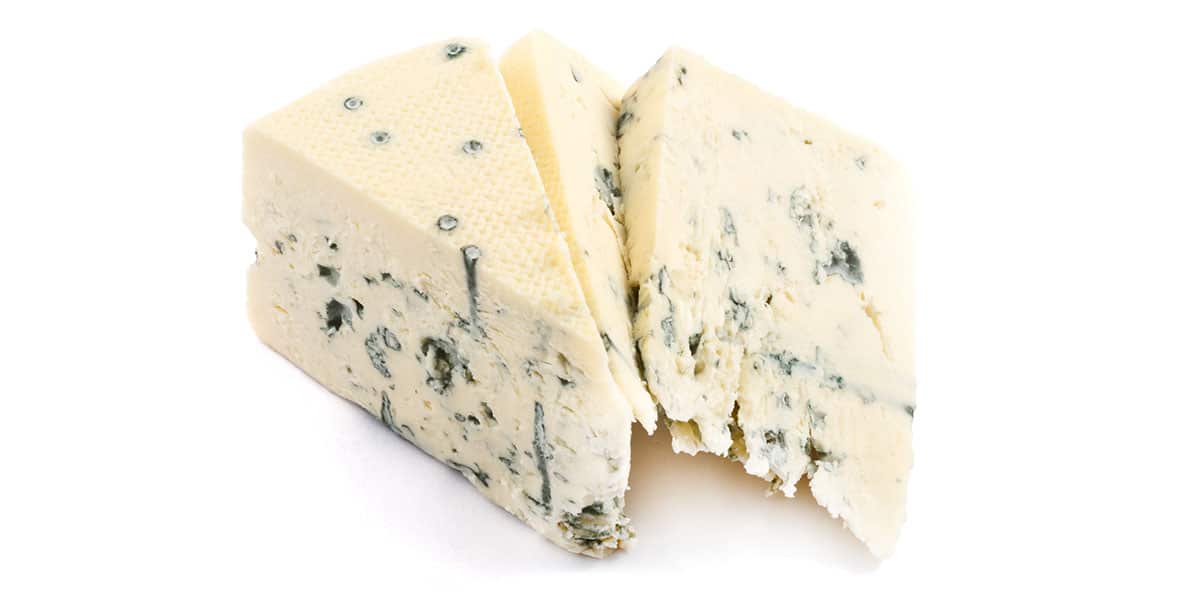
Edam
Having lived in Rotterdam for five years, Edam became one of my favorite cheeses which is saying something as the Dutch produce a wide variety of wonderful cheeses. Edam is a semi-hard cheese made from skim or part-skim milk. You might recognize this sweet and nutty cheese by its signature red wax seal, or as the French version labeled Babybels. They are a great snack to throw in your pocket or add to your cheese board. We liked including them in this Ski Hill Charcuterie board.
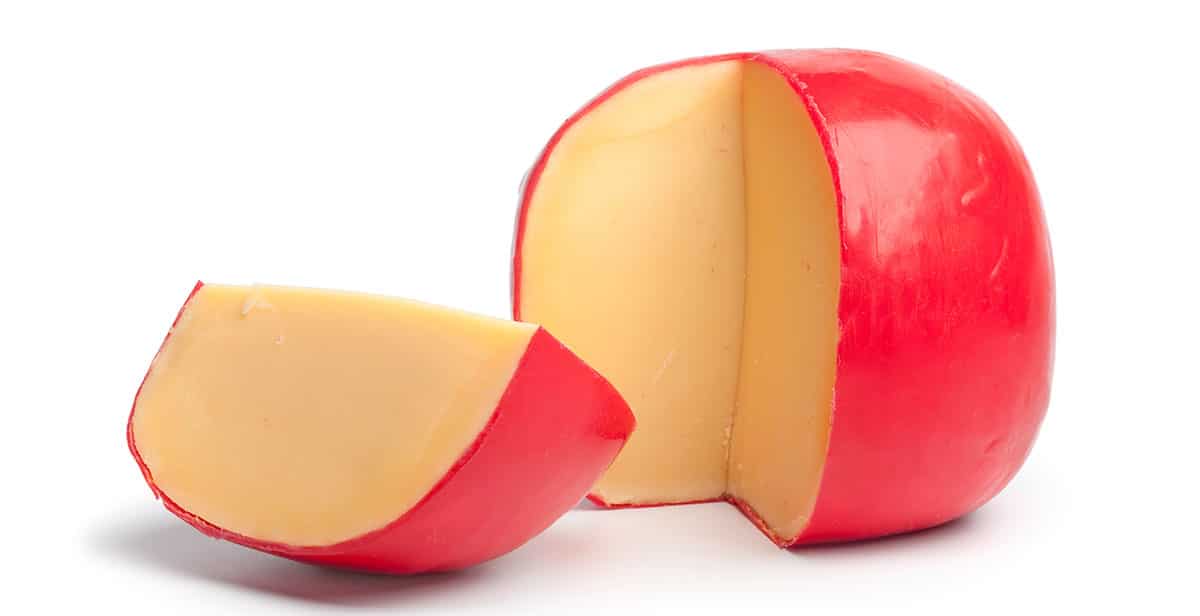
Emmental
This is a very old Swiss cheese from Bern Switzerland that dates back to the 13th Century. It is a lite yellow cheese with a mild yet savory taste. The curds are cooked before being pressed, and this process forms the bubbles that give emmental its distinct “Swiss cheese” holes. The cheese melts well making it a great cheese for this German Kasespatzle.
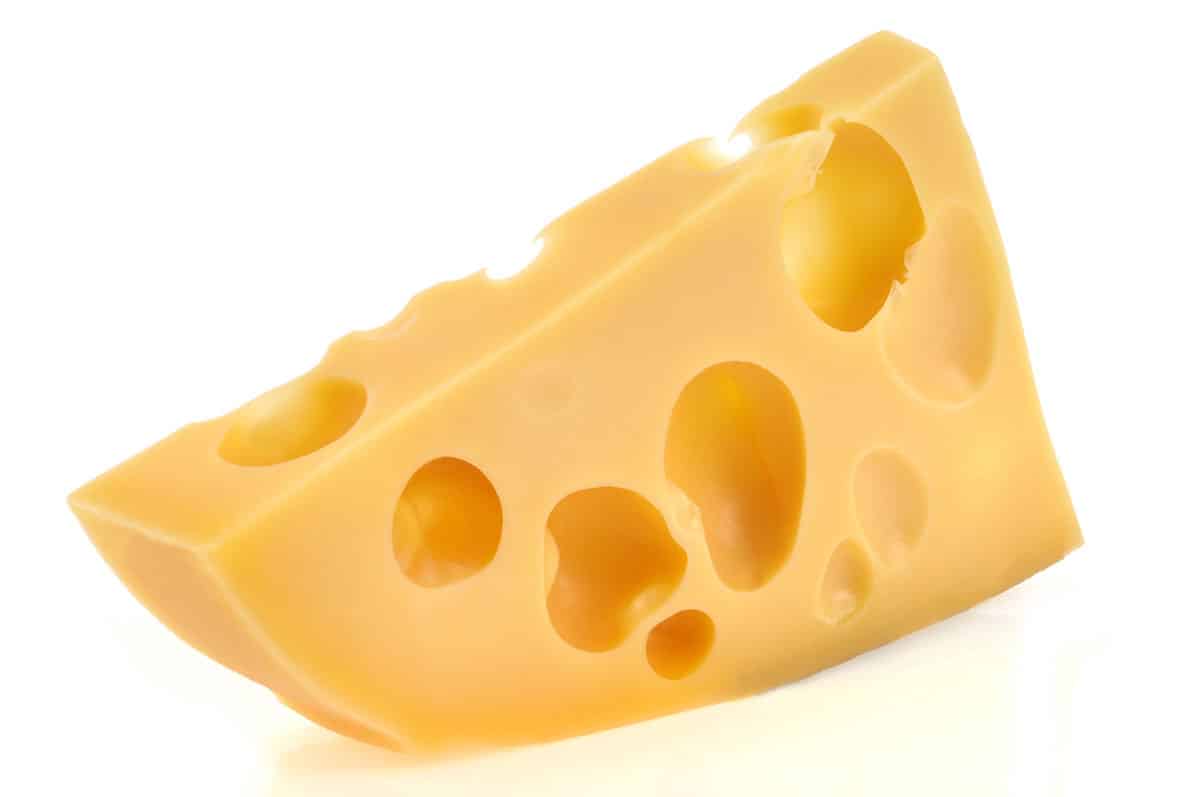
Feta Cheese
We listed the US Dairy Association’s 7 categories of cheese earlier. Brined cheese could easily have been an 8th. Brined cheeses are soaked in saltwater to give them an acidic tangy flavor. Feta cheese is one such cheese. It originated in Greece and is traditionally made from sheep’s or goat’s milk though cow’s milk feta has also become available. Feta crumbles well and is great in crumbles atop a salad.
Find all of our favorite feta cheese recipes here (our personal favorites are Whipped Feta, Zucchini Corn Salad, and Egg White Frittata!)
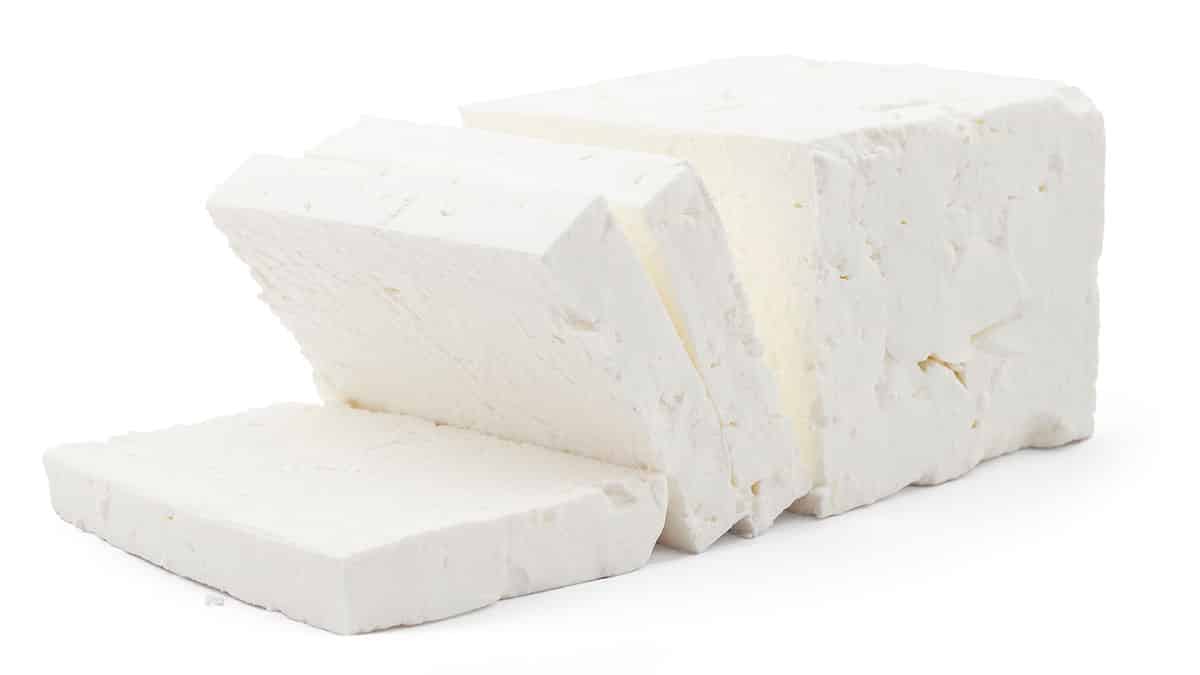
Fontina Cheese
Fontina is a cow’s milk cheese that originated in the Italian Alps in the 12th Century. It was then a strong pungent cheese, but as the cheese’s popularity spread abroad the taste changed with it. Today it is also produced in the USA, Argentina, Sweden, Denmark and Canada, and is generally a milder flavored semi-soft cheese.
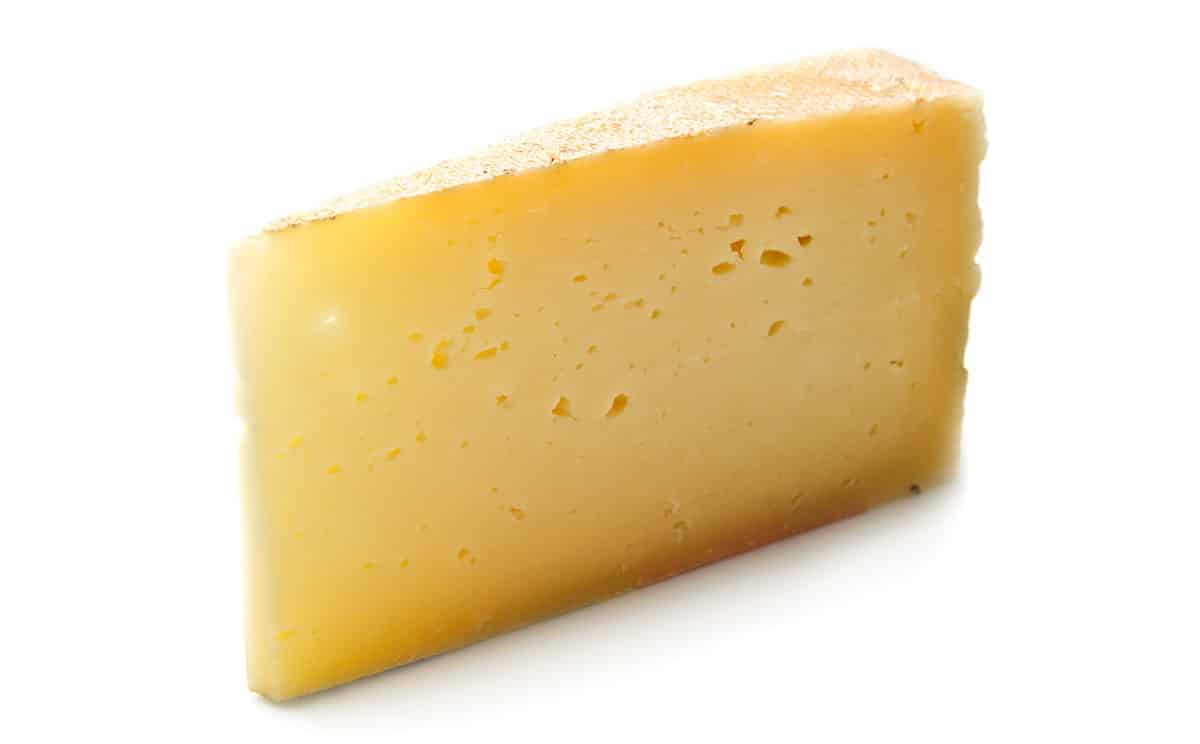
Goat Cheese
In the U.S., the term “goat cheese” or “chevre” is used to describe a fresh-soft cheese made from goat’s milk. Goat cheese is fairly pungent and comes in a white log or roll. It is often used on charcuterie boards with jams or mixed into salads. As this article has covered, there are also main cheese varieties that are made from goat’s milk that don’t have the name “goat cheese”.
We believe humans have consumed goat’s milk for the last 10-12,000 years and used it to make cheese for the last 7,000 of these years. We just didn’t know the true potential of goat’s milk during those first few thousand years. Goats are hardy animals that can thrive in regions and climates that cows and sheep do not. What’s more, they produce a nutrition dense milk, so they were the go to animal for milk and cheese production for thousands of years.
There is a lot you can do with modern goat cheese to include making Goat Cheese Stuffed Dates, Goat Cheese Pizza, and Goat Cheese Leek Quiche!
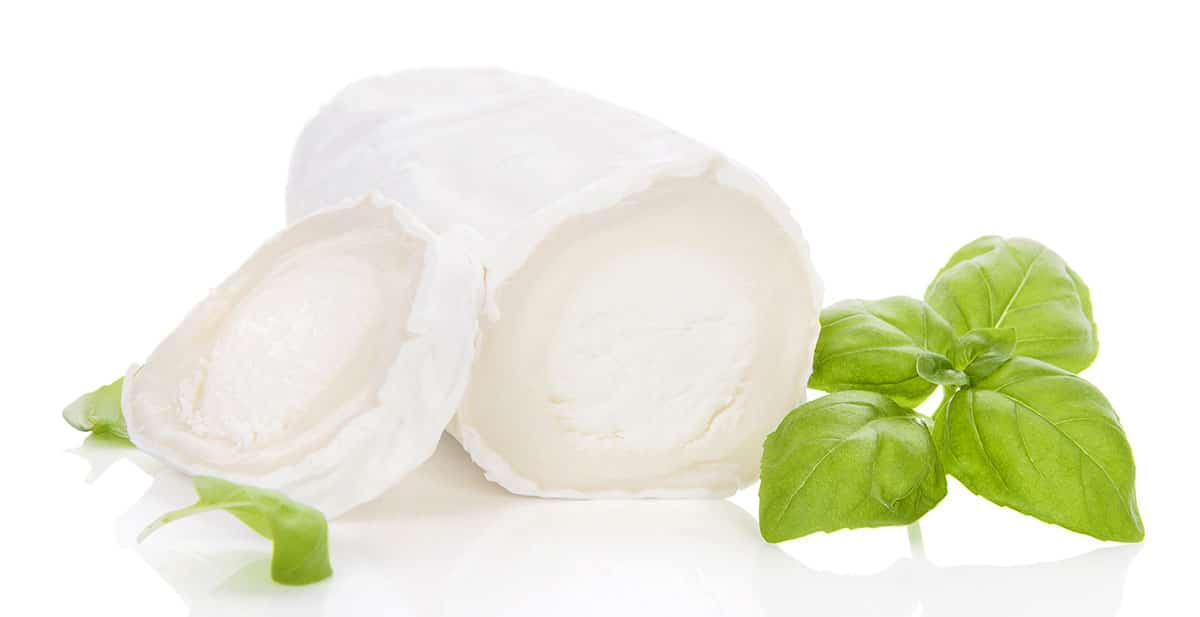
Gorgonzola
Gorgonzola originated in the Italian city of Gorgonzola, but is today made world-wide to include in the United States. It is made with whole cow’s milk and like other blue cheese varieties is injected with spores of penicillium. It is a relatively mild variant of blue cheese similar to Danish Blue and certainly milder than Roquefort.
Give it a shot with your favorite pasta or try this Gorgonzola Risotto Recipe. If you want to limit your carbs a bit, or just want to try something new for pasta try Sweet Potato Fettuccine in Gorgonzola Sauce or Butternut Squash Pasta with Gorgonzola Cream Sauce.
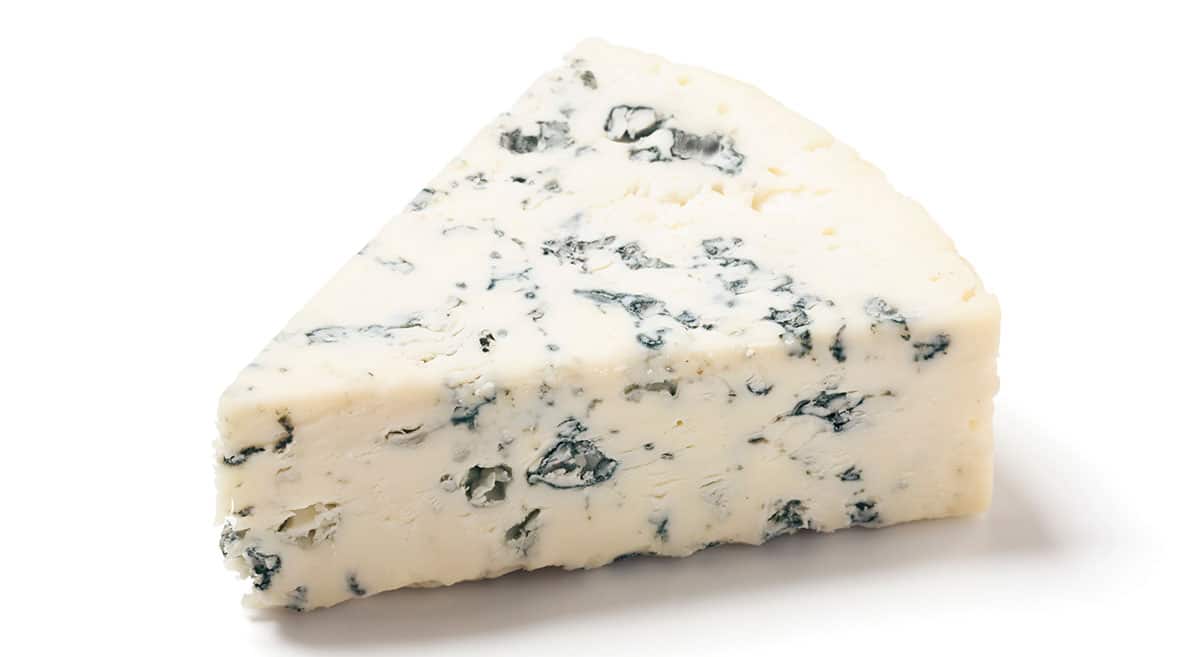
Gouda
Gouda is one of the most popular cheeses in the Netherlands, named after the city of Gouda, where it is traditionally bought and sold. This is a semi-hard cheese made with cow’s milk and patiently aged. Gouda is mild and creamy when young and becomes increasingly sharp with age. Gouda is aged anywhere from a few weeks to 7 years depending upon the characteristics desired. The Dutch have had a lot of time to perfect this cheese as written records first mention it in the 12th Century.
Gouda is great in desserts like this Apple Gouda Hand Pie Recipe, as a snack in Gouda Cheese Crisps, or for lunch in this Roasted Pepper Gouda Grilled Cheese. You can probably tell that I, like the Dutch, am a big fan of gouda. Here’s how to use gouda cheese best!
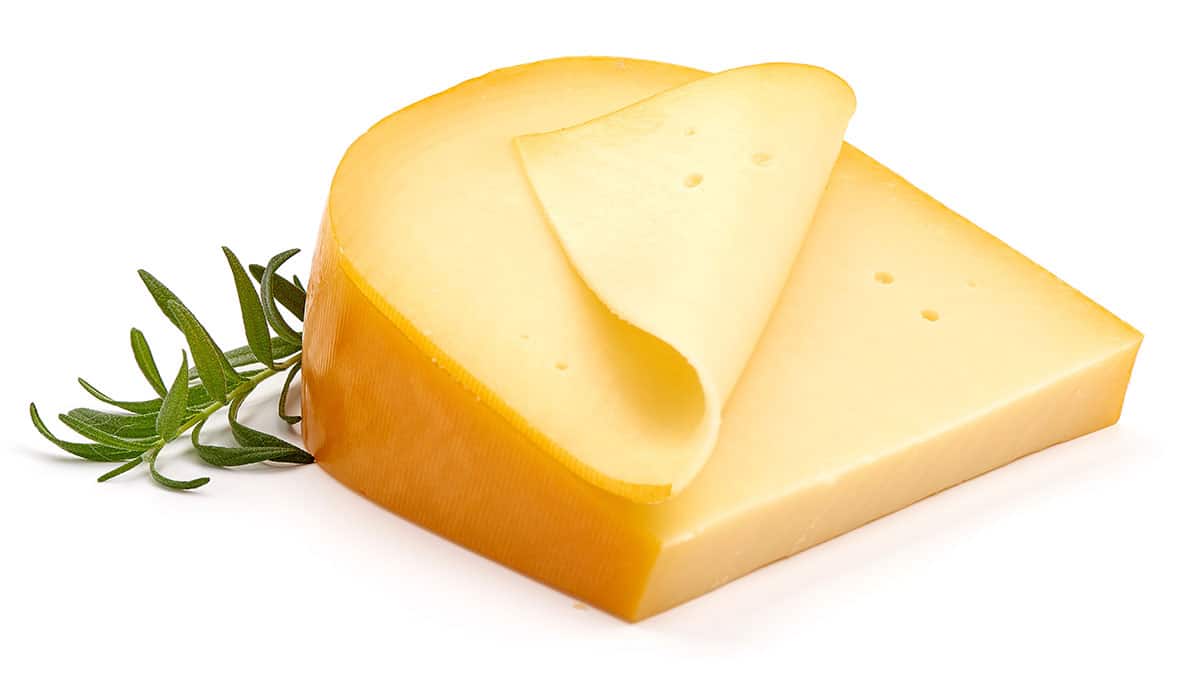
Grana Padano
Grana Padano is a popular Italian hard cheese made from skimmed cow’s milk and aged at least a year. You can use it in any recipe you would use parmesan. We are partial to it on this Everyday Kale Salad.
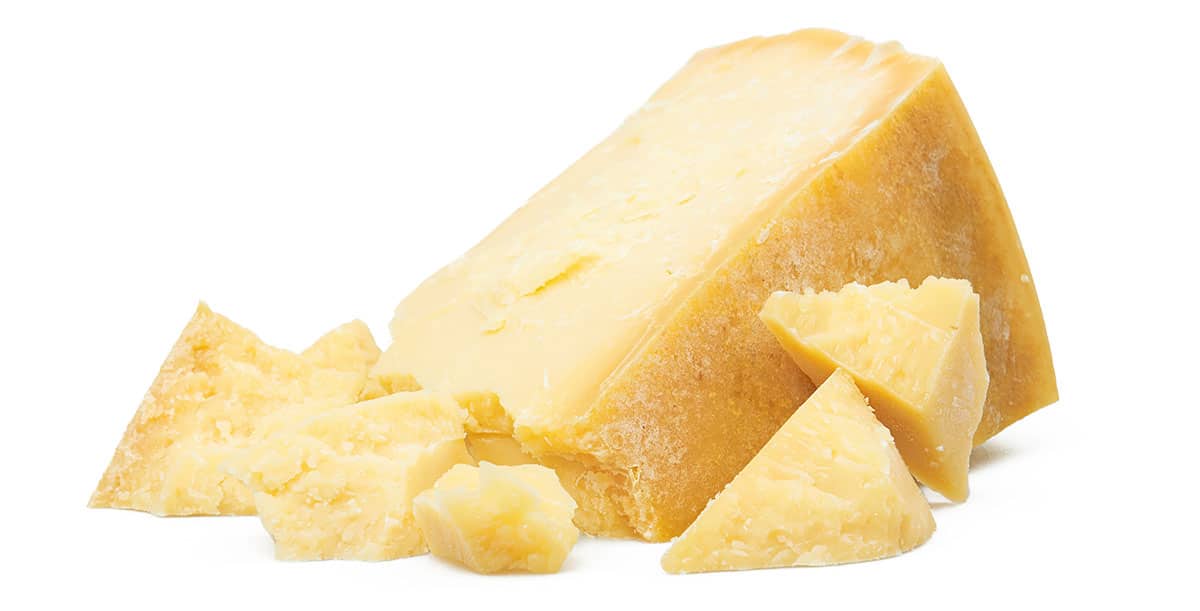
Gruyere
Gruyere is a Swiss cheese variety named after the Swiss town of Gruyere. It is a firm cheese made from cow’s milk that goes well on any cheese board. It is also routinely used in fondue and French onion soup. We like it in another European specialty, German Kasespatzle. Don’t have it but need it for a recipe? Here are 19 gruyere substitutes!
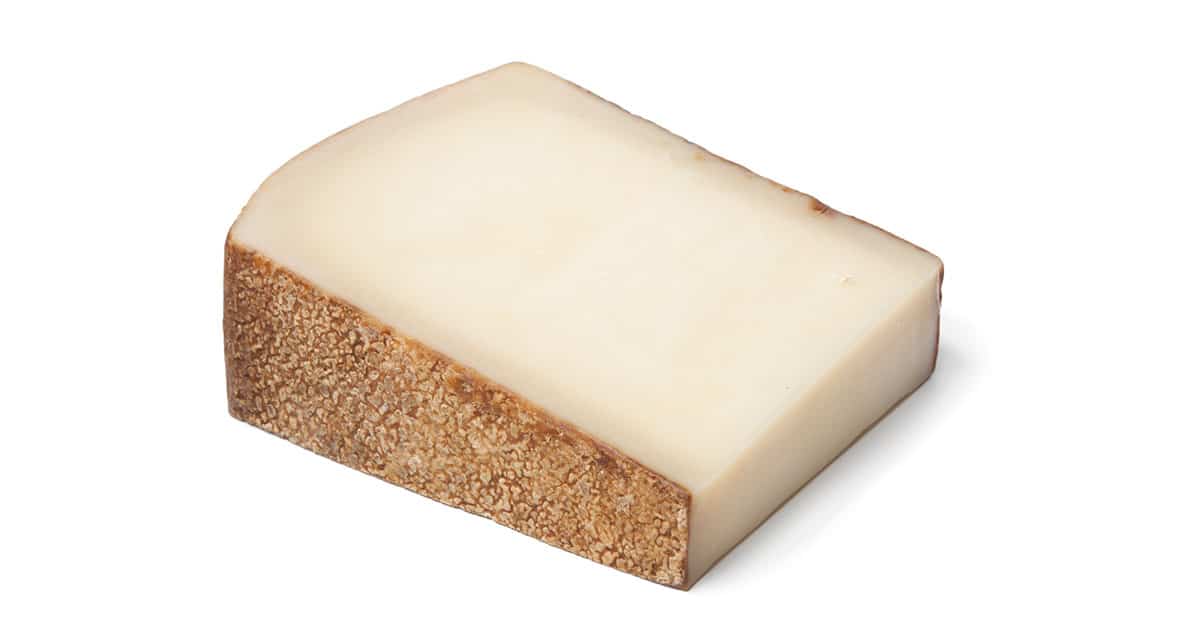
Halloumi
Halloumi cheese is native to the Island of Cyprus. It has a high melting point, which makes it ideal for cooking. Halloumi is also a relatively healthy cheese, as it is low in fat and calories. A 100g serving provides 20g of protein.
Halloumi has a chewy and creamy texture and somewhat tangy taste. Grilled Halloumi is our favorite use for it, but it can also be used as a burger replacement in this Halloumi Burger.
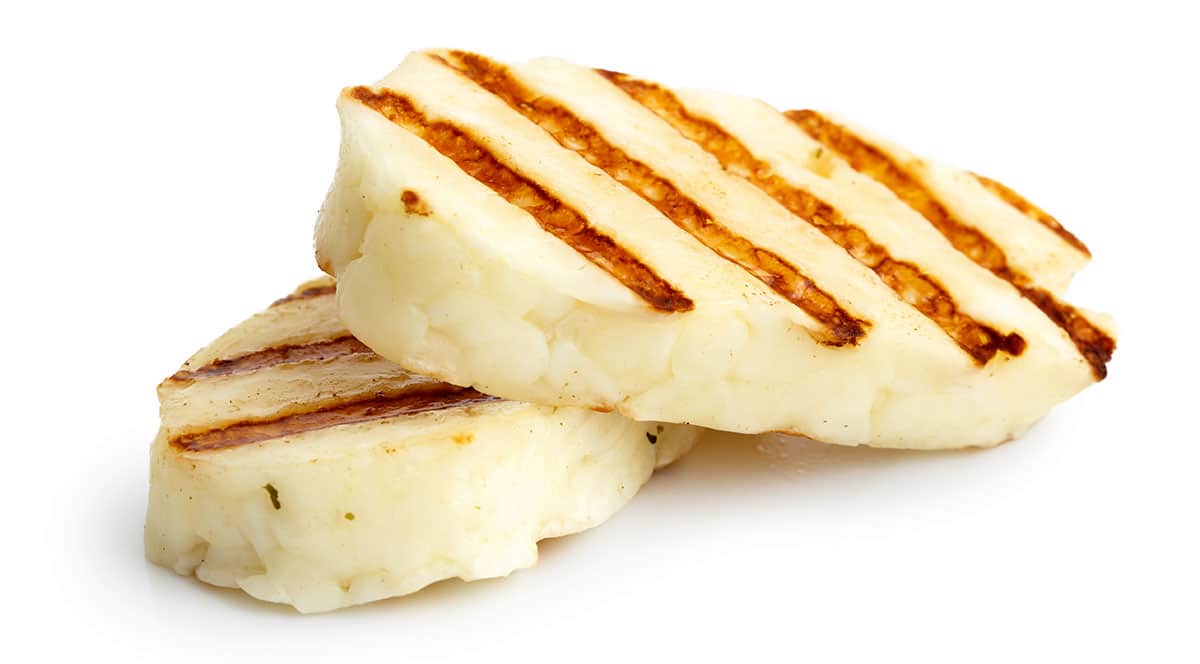
Havarti Cheese
Havarti is a Danish semi-soft cheese made from pasteurized cow’s milk. It was introduced in Denmark in 1921 and given the Havarti name in 1952. Today the Danes produce about 17 thousand tons of Havarti a year. This creamy cheese is great on sandwiches and probably even better in grilled cheese. Try it in this Blueberry Grilled Cheese.
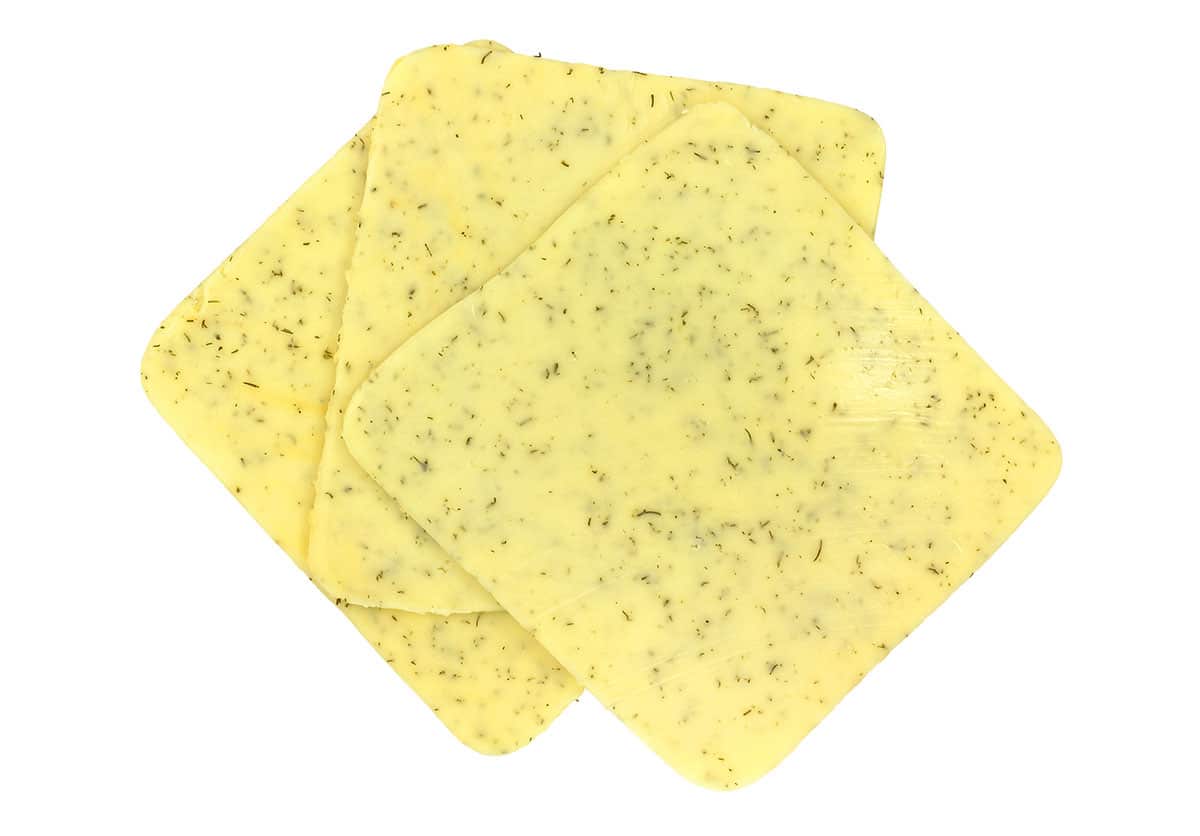
Hrudka
Hrduka is known as the Ukrainian Egg Cheese or the Eastern European Easter cheese. We have so far focused on cheeses that you can easily get, but in a nod to the people of Ukraine fighting for their freedom we include Hrudka here. Hrudka is made from eggs and has been a Ukranian Easter tradition for generations. It is a smooth slightly sweet cheese generally served at Easter with ham.
Jarlsberg
Jarlsberg is a Norwegian cheese whose popularity has carried production abroad. It is a Swiss style cheese made from cow’s milk. This mild semi-soft cheese is noted for its yellow wax crust (rind) and resembles its cousin emmental. Jarlsberg is a versatile cheese used in hot and cold sandwiches, cooked into casseroles, or used on cheese boards.
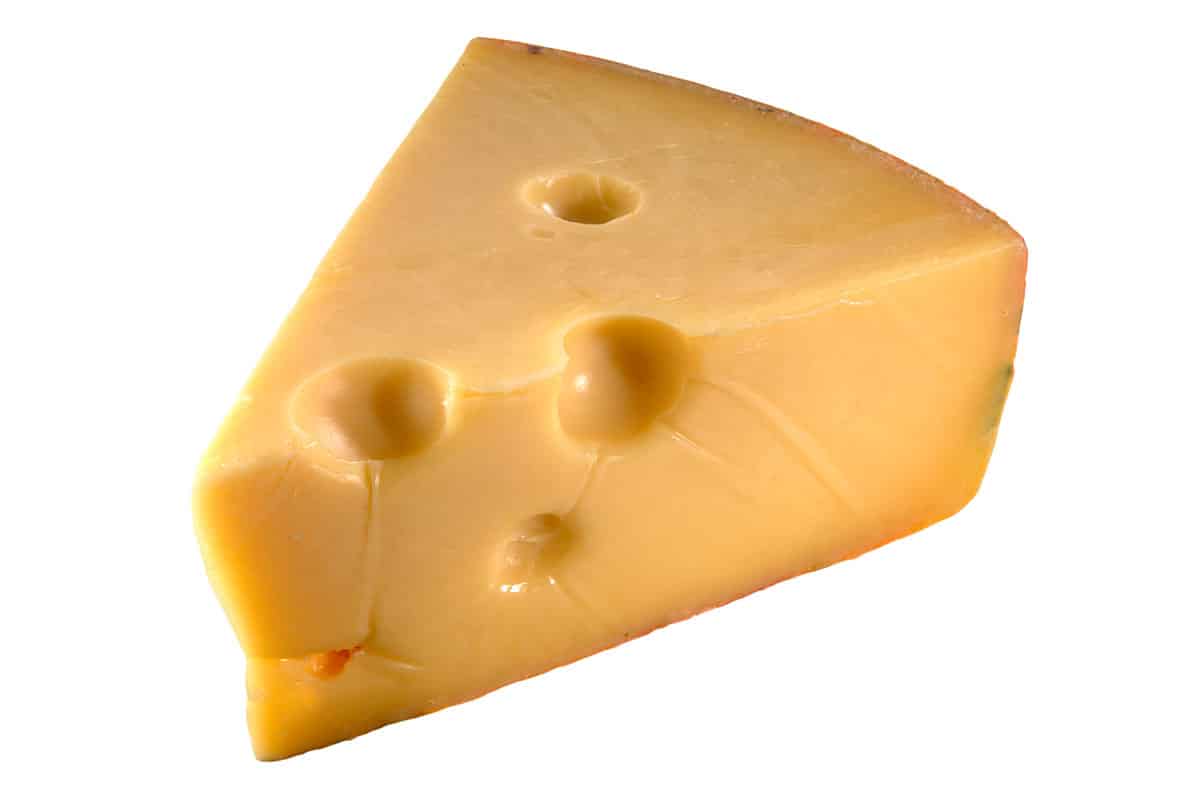
Manchego Cheese
Manchego is a hard Spanish cheese made from sheep’s milk. This is a well aged cheese that is good in any potato gratin recipe. If you want to try something a little different and lower in carbs try our Endive Gratin. We make it with Gruyere, but Manchego is a fitting substitute. You can buy Manchego at Costco as the Kirkland brand comes from Spain aged six months. It is pretty good and at a great price. Whole Foods sells a 12 month aged variety for a good bit more.
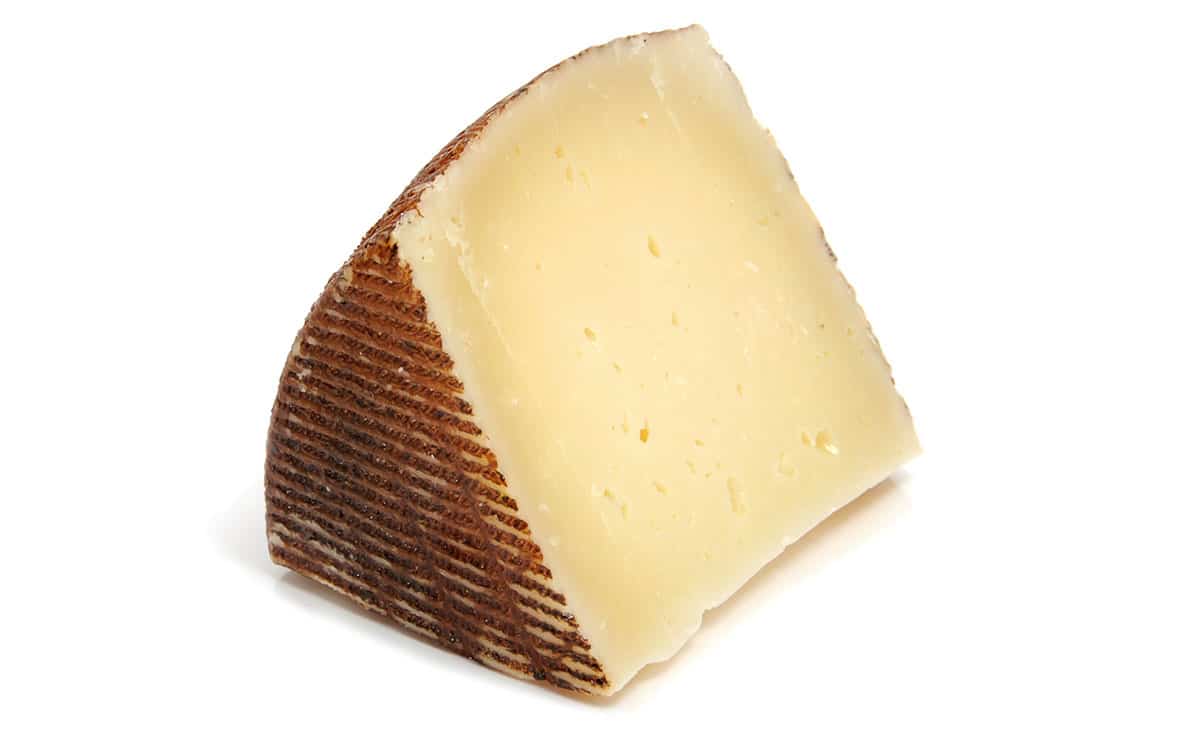
Mascarpone
Mascarpone is the Italian secret ingredient in tiramisu. It is very similar to American cream cheese only creamier as the fat content is much higher. Like cream cheese it is very versatile and can be flavored in a lot of ways. While you can find it in both sweet and savory recipes, our favorite use is decidedly sweet in these Special Day Cinnamon Rolls.
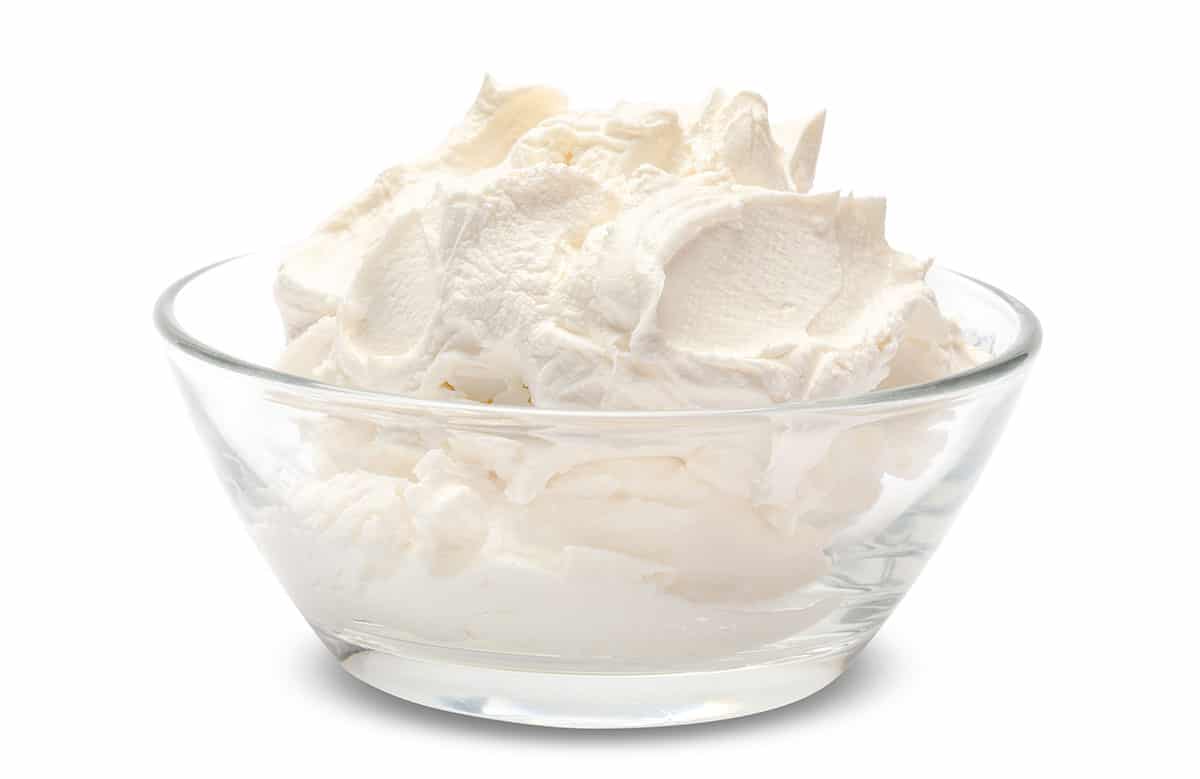
Monterey Jack
Monterey Jack is an American pasteurized cow’s milk cheese that is great on burgers as it melts well (high melting point) and has a mild pleasant taste. It is also good with many pasta recipes or casseroles. We like it in two Mexican inspired recipes: Enchilada Quinoa Stuffed Peppers and Huevos Rancheros.
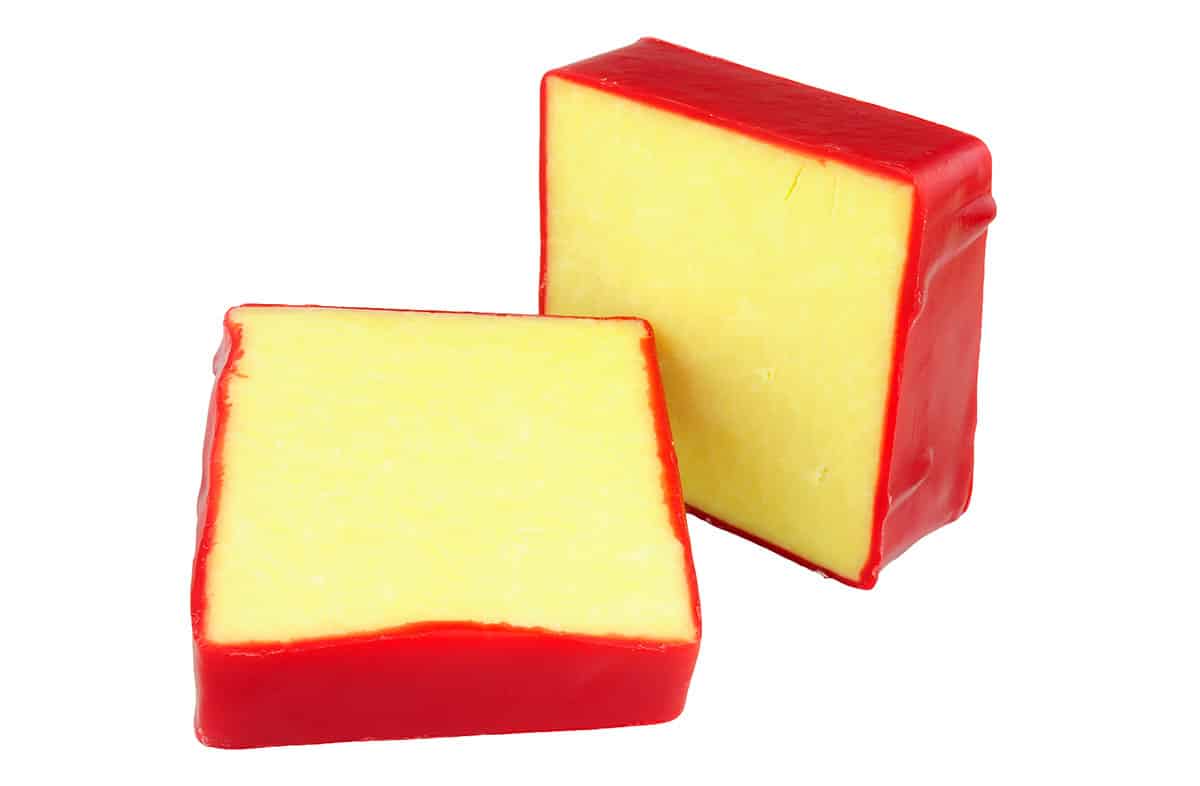
Mozzarella
We feel like we almost don’t need to write anything about mozzarella as it is the ubiquitous cheese we all use, know, and love. Mozzarella is a pasta filata, or stretched curd cheese, made by soaking the curd in water until it is sufficiently elastic that the cheese can be kneaded and stretched to give it the chewy elastic texture we recognize as mozzarella.
Mozzarella was invented in Italy in 1570, but is of course today made worldwide and is the #3 most produced cheese in the United States making up 9% of all production. Want to try a fancy but wonderful pizza? Give Truffle Pizza a try, or go for a classic with these Air Fryer Mozzarella Sticks.
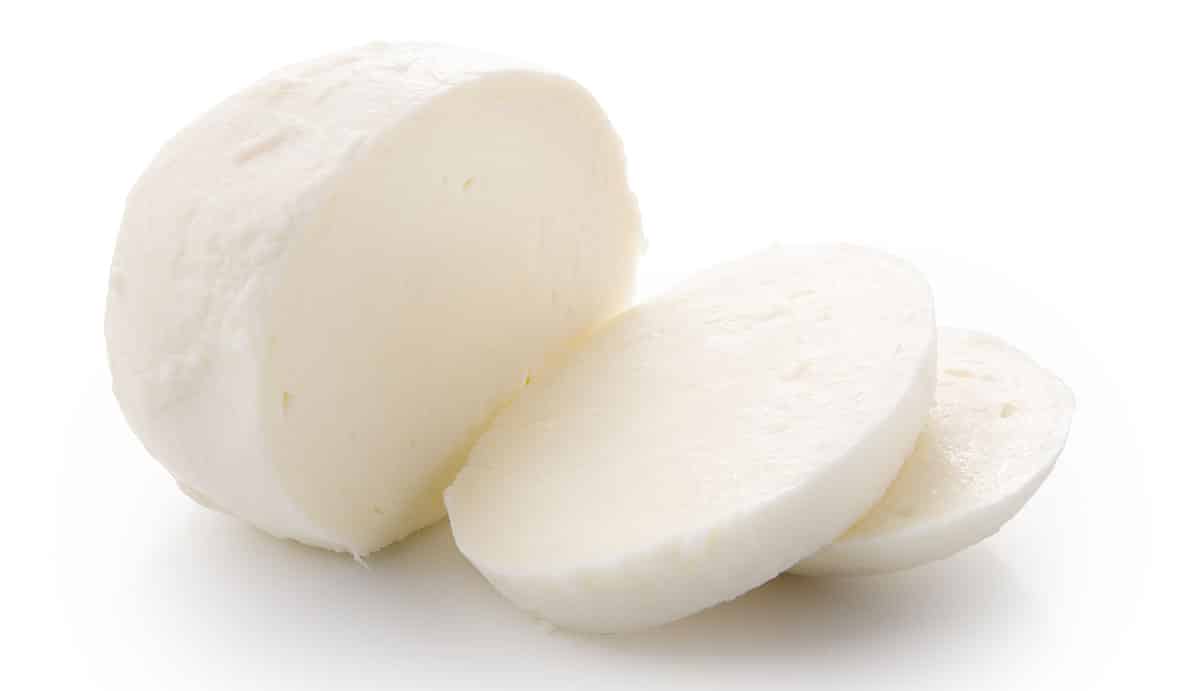
Muenster Cheese
Muenster is a brine treated cheese that is distinguishable by its orange rind which comes from the annatto seasoning used to flavor and color the cheese. Muenster is a mild buttery cheese that is very versatile. It is a good option for macaroni & cheese, cheeseburgers, quesadillas, and of course grilled cheese like our favorite Roasted Pepper Grilled Cheese.
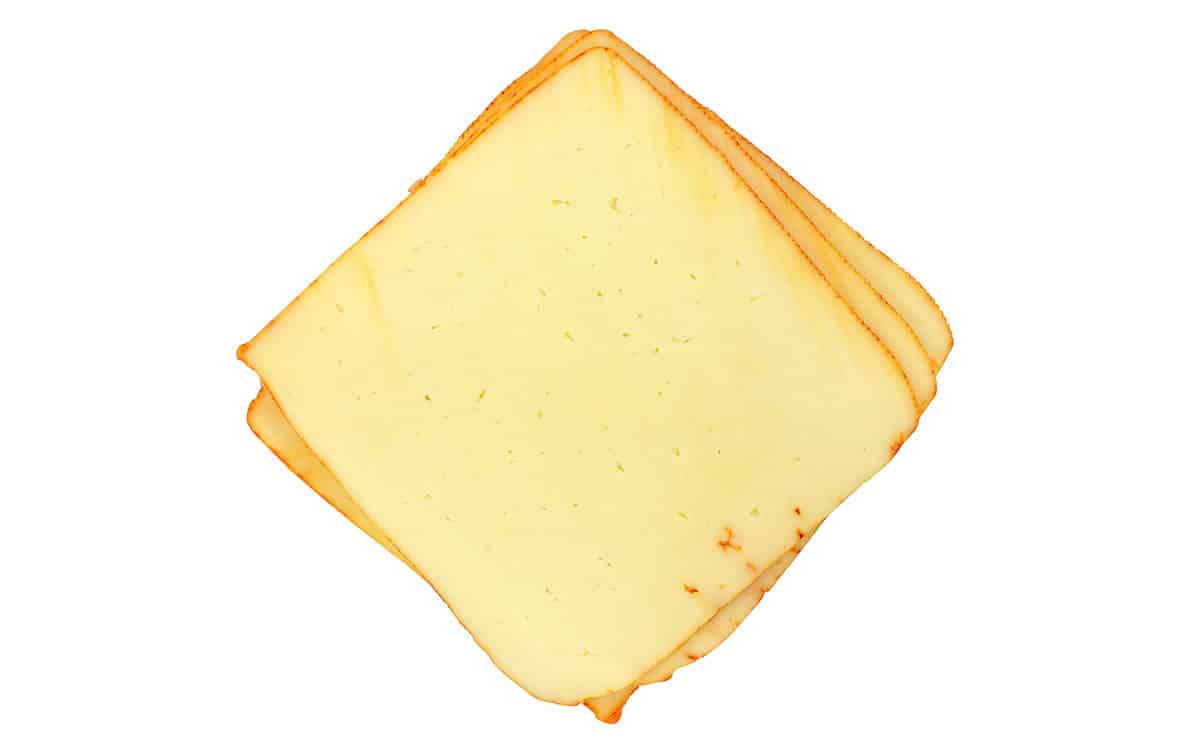
Neufchâtel
Neufchâtel is a soft mold-ripened cheese from the Normandy region of France that likely originated as early as the 6th Century. It looks very similar to brie or camembert and has the same firm white edible rind. It has a sharper taste than its similar cousins and has a grainy texture vs brie’s creamy texture.
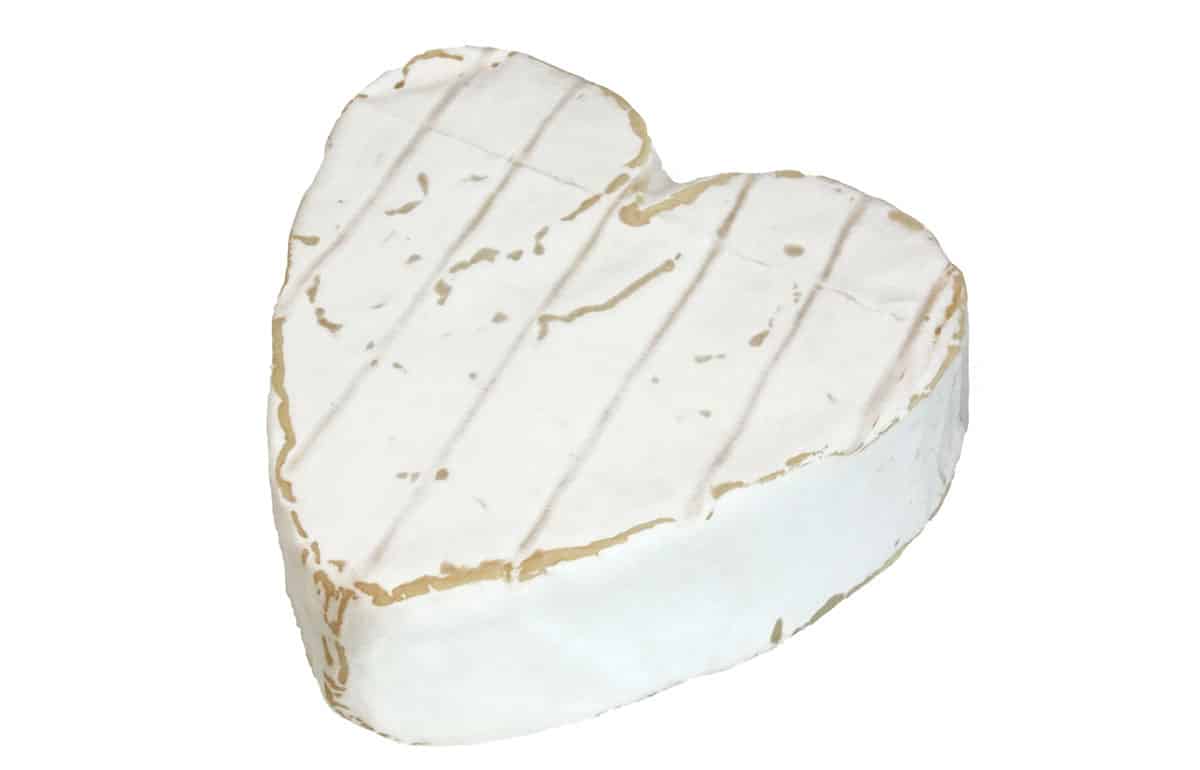
Paneer
Paneer cheese hails from India, and is a young, fresh cow or buffalo milk cheese. It can resemble cottage cheese or be pressed into a firmer texture and resemble tofu. It remains crumbly and has a mild flavor and high protein content. Paneer doesn’t melt, opening up a number of options. You can use chunks in soups, curries, or kebabs. Like tofu, paneer is a common vegetarian substitutions for meat. If this is something you want to look into further check out Tofu vs Paneer Faux Meat Uses.
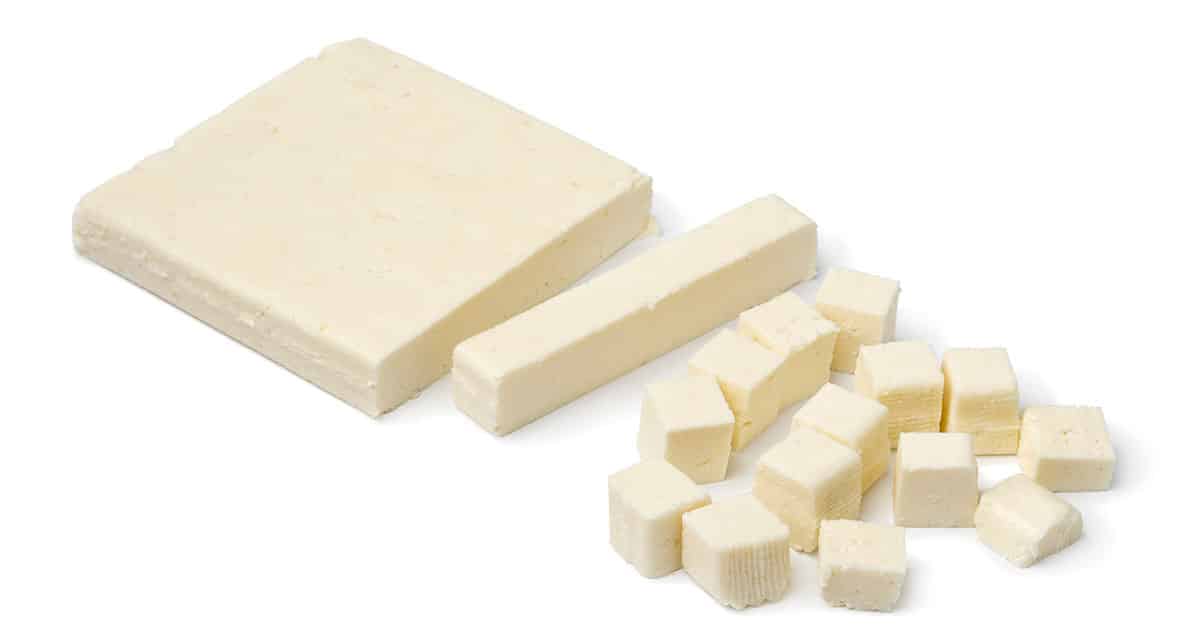
Parmesan
Parmesan is a hard Italian cheese developed in the 12th or 13th Century. It is normally grated and known for its strong aroma and sweet taste. Its most common American use is sprinkled over pasta, but it is much more versatile than just that. Try it in this Farro Risotto, Vegetarian Carbonara, or Eggplant Lasagna Recipe!
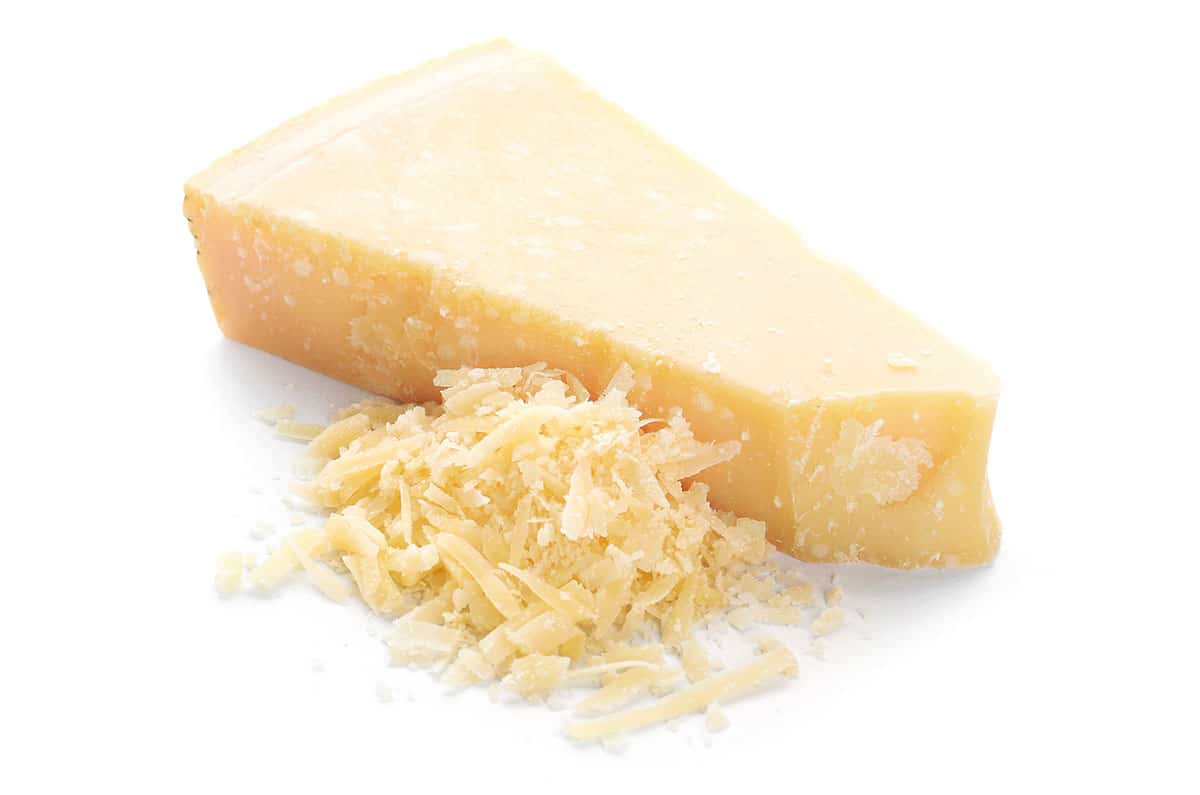
Parmigiano Reggiano
While most agree that you can use Parmigiano Reggiano in place of Parmesan in any application, they are not the same cheese. Parmigiano reggiano is only made in Parma Italy (and a few other surrounding areas), and is made to strict standards. For example, parmigiano reggiano must be aged at least 12 months while parmesan is not under that same constraint. It is a salty and sharp cheese that is great in this Homemade Pesto Genovese.
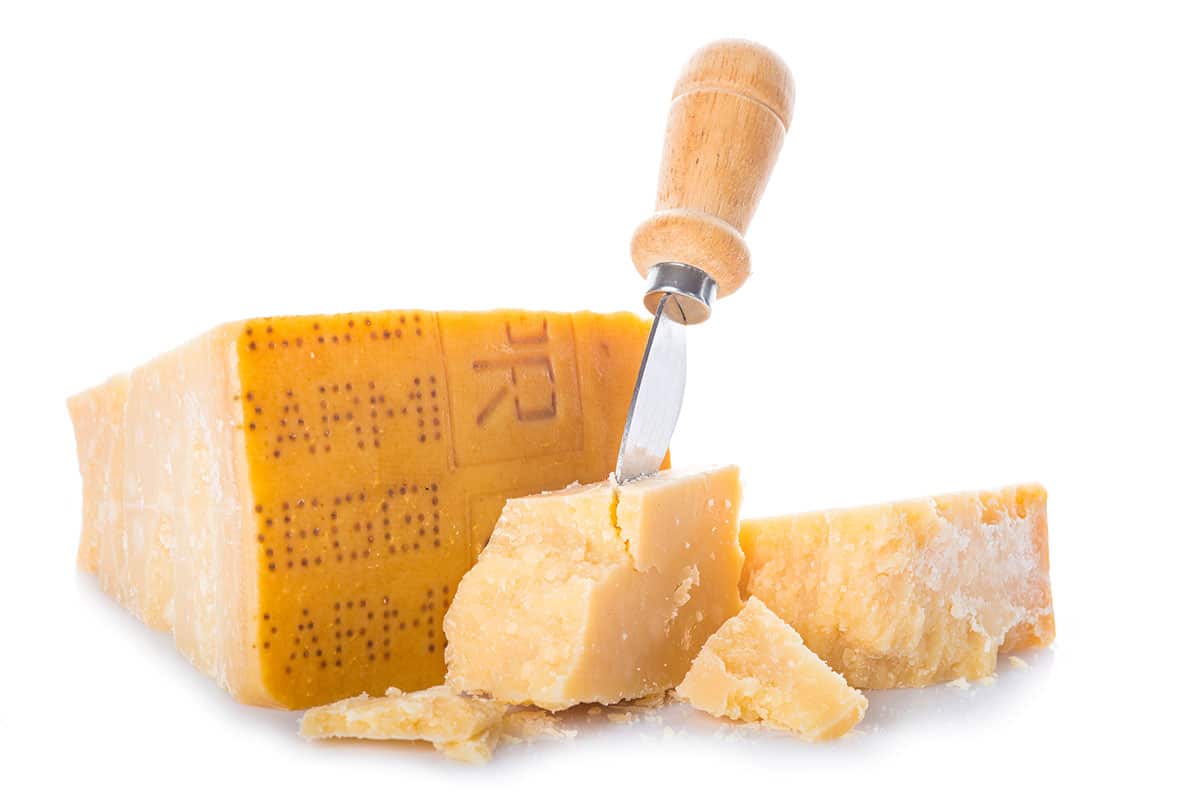
Pecorino Romano
This South Italian cheese is a sharp, salty, sheep milk’s cheese often used grated. Pecorino means “sheep” in Italian, so there is no cheating with the production process of Pecorino Romano. It is believed to be an ancient cheese eaten by the Roman army. It is mostly produced on the Island of Sardinia today, and in the same way it was made centuries ago. You can likely get it at an international market, so try it on this Everyday Kale Salad.
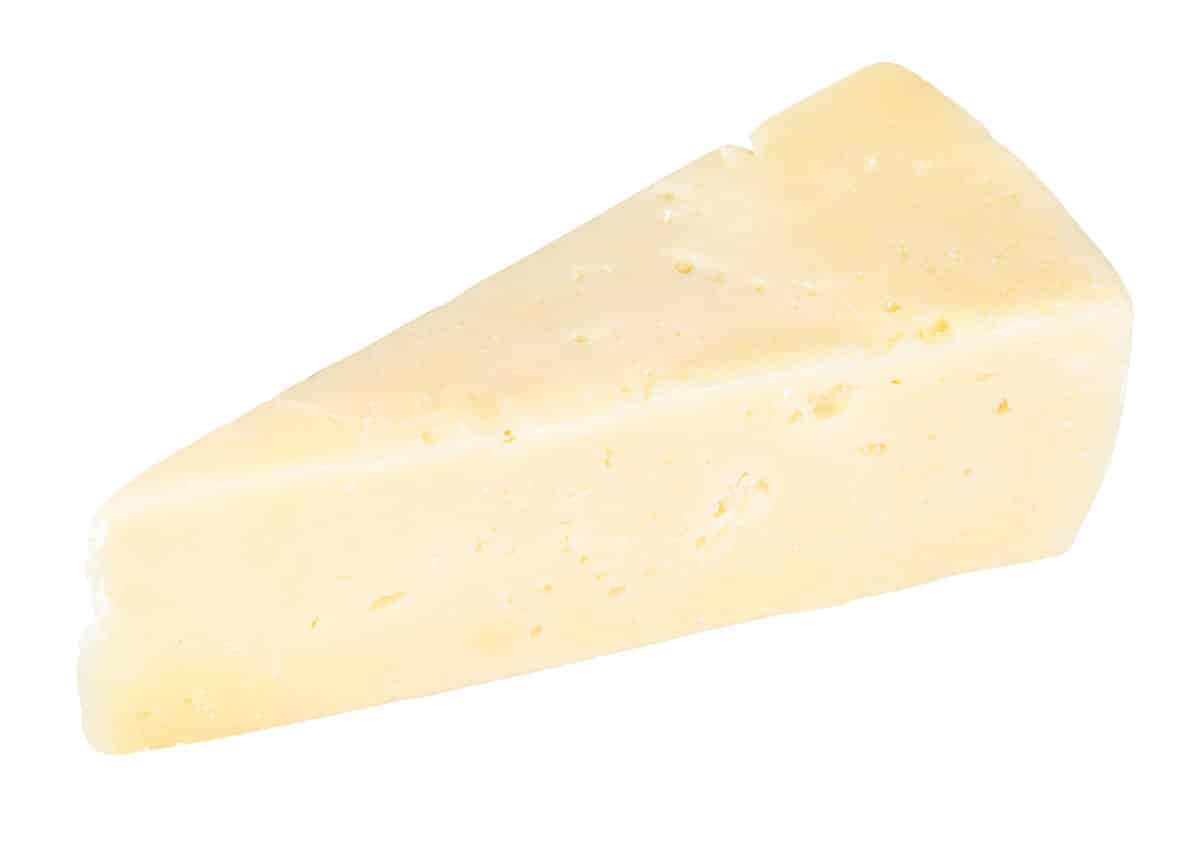
Pepper Jack
Pepper Jack is a variety of Monterey Jack that is flavored with peppers and spices. It melts easily due to its high moisture content making it great on burgers. Use it where you would Monterey jack, but when you want the cheese to add a little kick. Pepper jack is the 4th most eaten cheese in the United States constituting 7% of production.
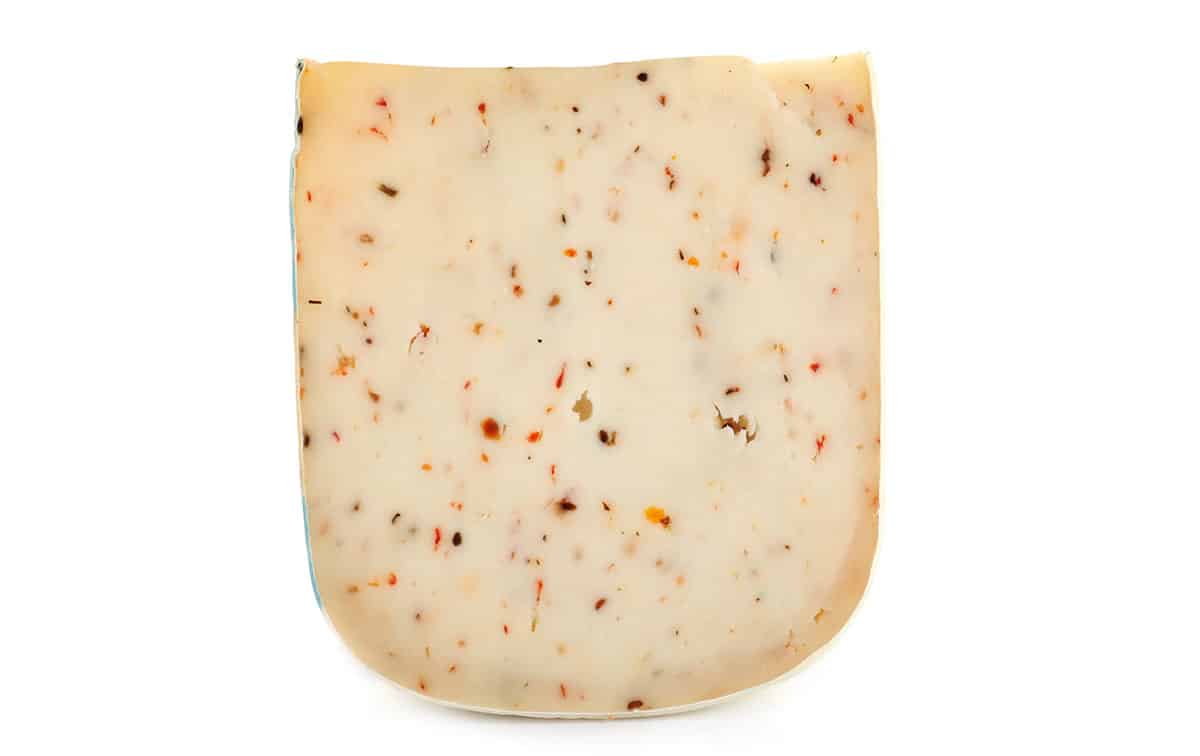
Processed Cheese
We listed processed cheese as one of the US Dairy Association categories of cheese. Many types of cheese can be “processed”. There are people who avoid processed cheese, but it definitely has its place for the reasons we described at the start of this article. There are some applications for which we won’t use anything but good old fashioned packaged processed cheese!
One such application is our Ski Hill Charcuterie. I like to bring out a semi-fancy charcuterie board while out skiing with friends. I’ll pack the charcuterie contents in my ski pack and break it out up on the hill to the delight of friends who now expect it. Processed cheeses are the best option for such uses. You can use this concept for hiking, biking, or any adventure!
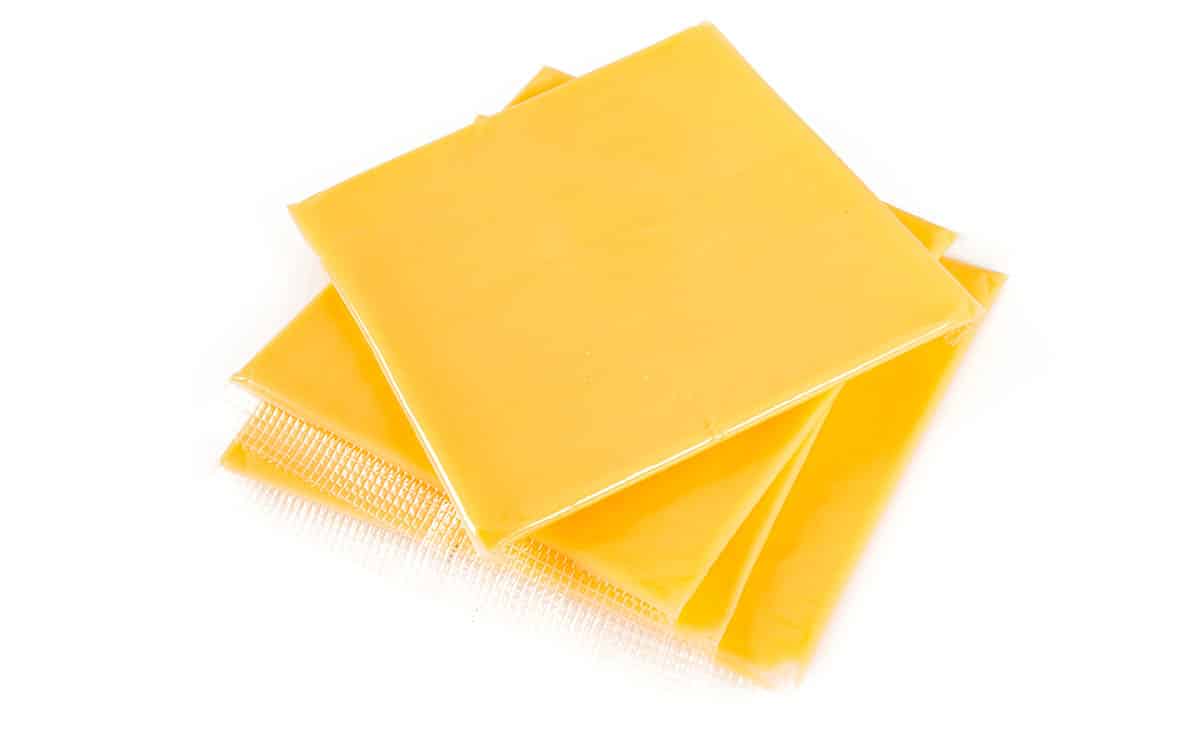
Provolone Cheese
Provolone hails from Southern Italy. It is made from cow’s milk and known for its mild nutty flavor. The flavor changes with age, and it becomes sharper as it ages. Provolone is a yellow (often very light yellow) semi-hard cheese that is often smoked making it great on a grilled cheese sandwich or Philly cheesesteak. For the vegetarian audience, try it on this oyster mushroom Vegetarian Philly Cheesesteak.
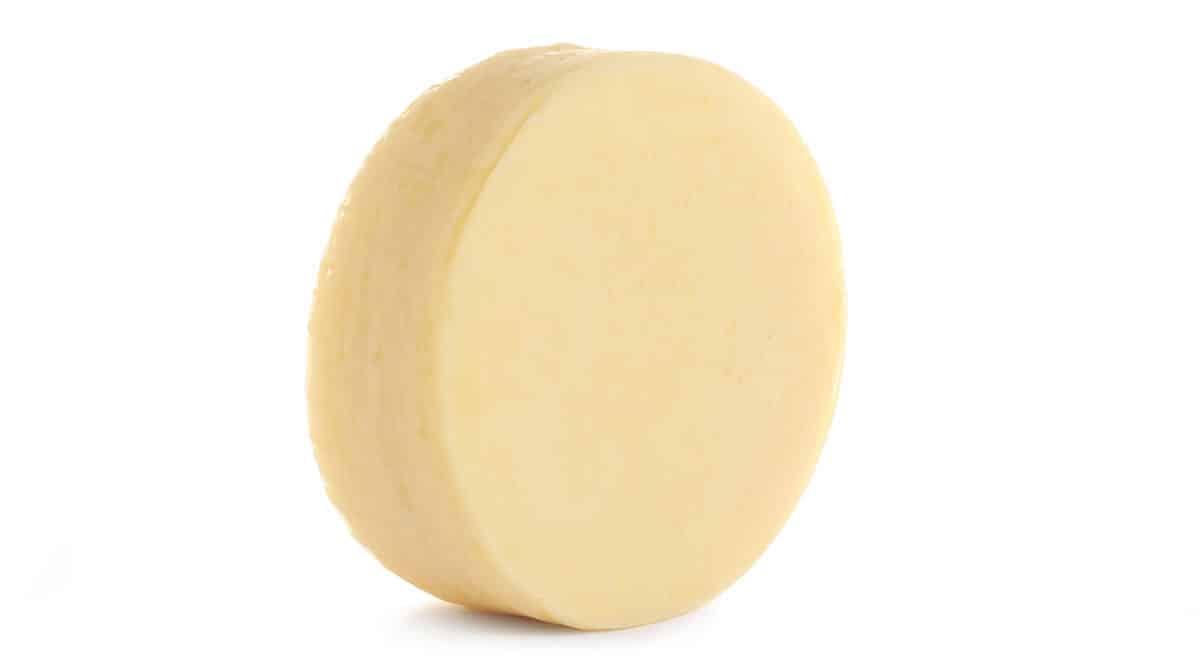
Quark
Quark is often not considered a cheese, but a dairy product. Quark is made from sour milk and fermented with mesophile bacteria. This gives it an understandably sour taste. Like cream cheese, quark can easily be flavored. Its primary use in Germany is in baking desserts, particularly cheesecake. In Eastern Europe it is often used in making a form of pancake and in a variety of savory dishes. While common across Europe, quark is difficult to find in the USA. Your best bet is probably an international market.
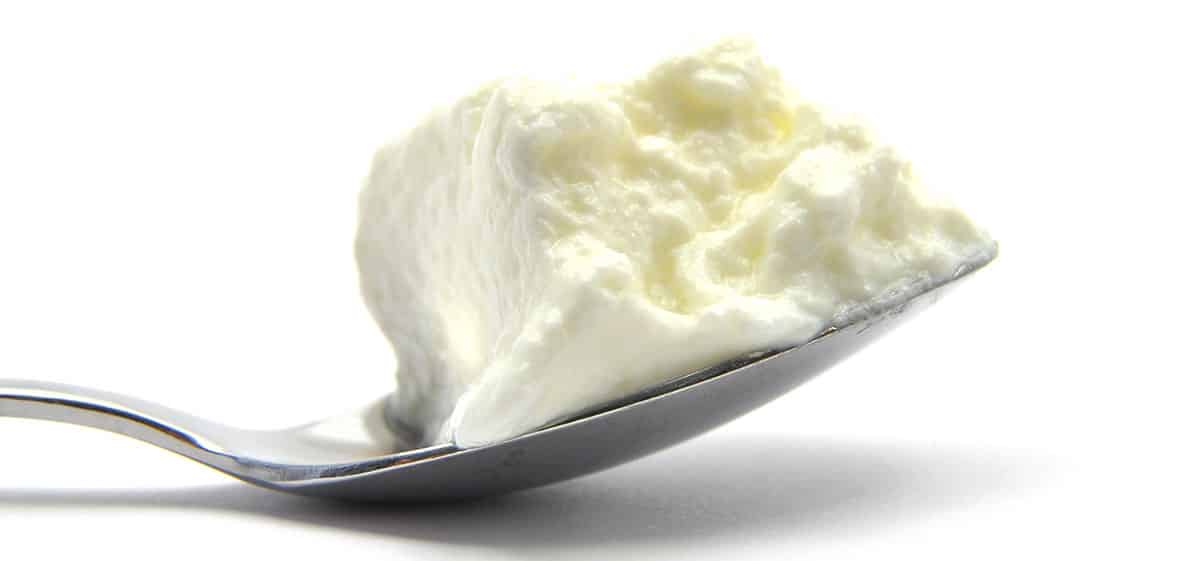
Queso Blanco
Queso Blanco is a staple in Mexican cooking. The name simply means “white cheese”. It does not melt well, so use it in your recipes in which you do not want the cheese to melt into a liquid. The high melting point also makes queso blanco a good option for grilling.
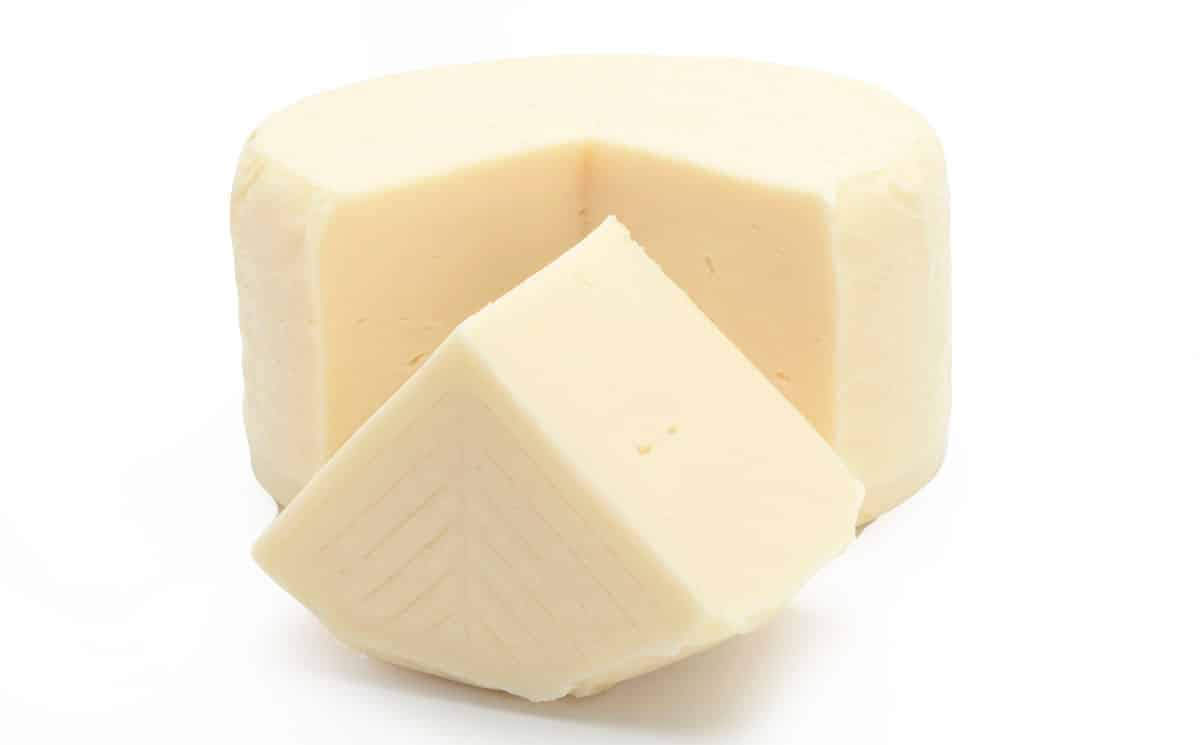
Queso Fresco
Queso fresco is Spanish for “fresh cheese” which seems appropriate for this mild soft-fresh white cheese. Like Blanco, it does not melt well, so it is a good cheese to sprinkle on top of enchiladas or tacos.
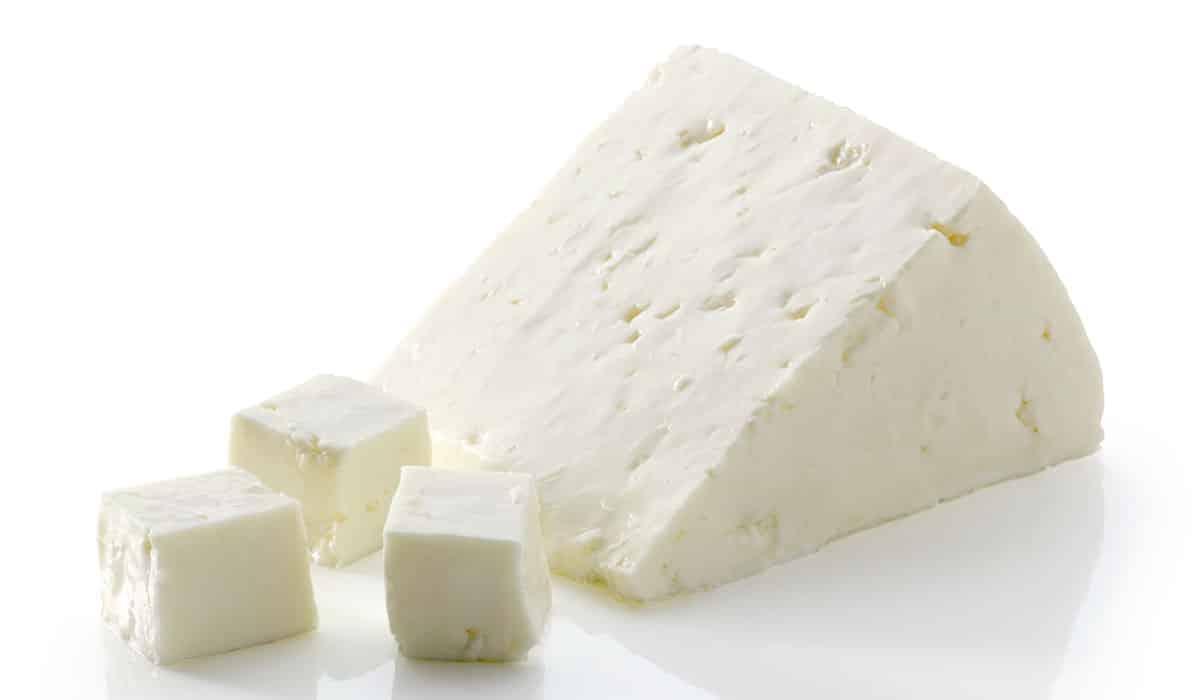
Raclette
Raclette is both a dish and a cheese used to make a cheese dish native to Switzerland. The raclette cheese is heated, traditionally in front of a fire, and boiled new potatoes or meat are held beneath to catch the dripping cheese. Today restaurants often use a heat lamp to melt the cheese and just drip the cheese over a whole plate full of food vs single pieces.
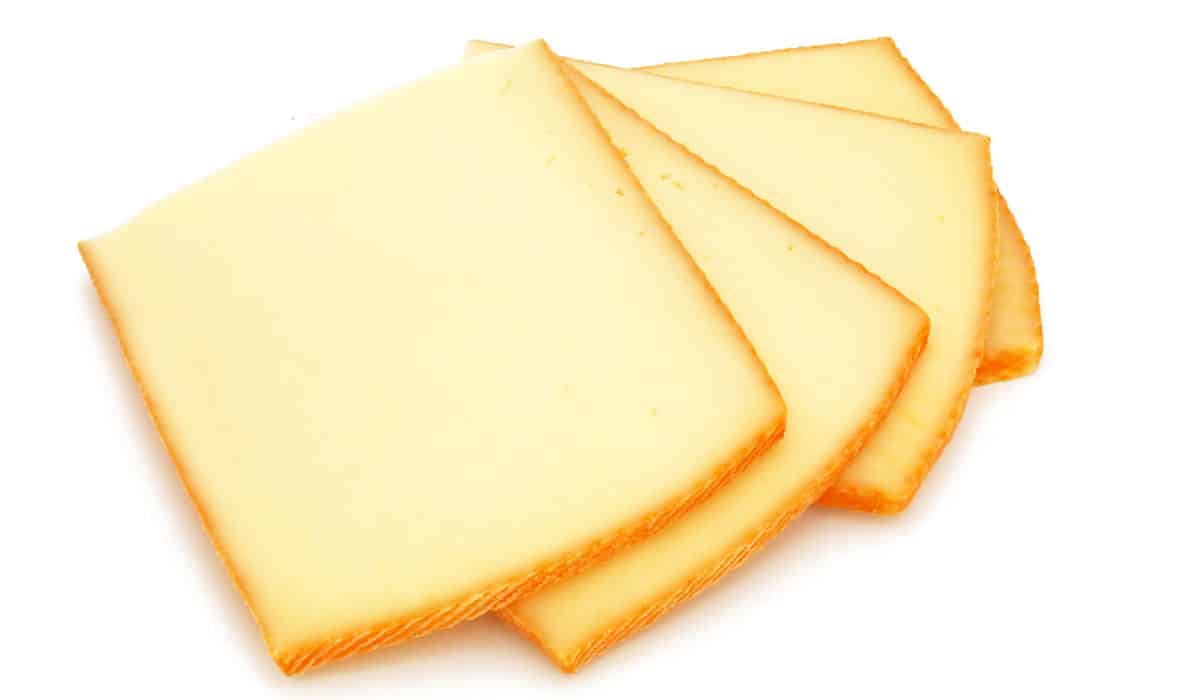
Ricotta Cheese
Ricotta is a soft-fresh Italian cheese that is eminently spreadable. This is the go to cheese for lasagna, crepes, galettes, and a host of other favorites. Ricotta is generally made of cow’s milk, but can also be found made from buffalo’s milk. Try it in either of these two lasagna variants: Zucchini Lasagna Recipe or Eggplant Lasagna Recipe or Ricotta Stuffed Peppers. Or make your own ricotta in your microwave!
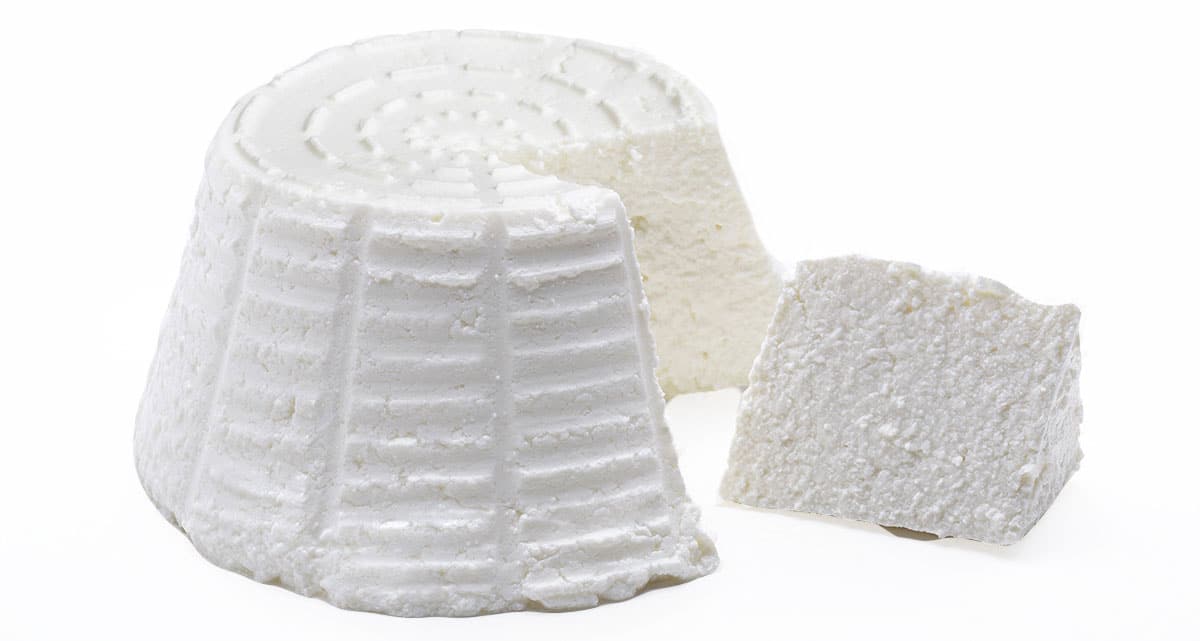
Romano
Romano is a hard sheep’s cheese that is generally grated and put on pasta, often in combination with parmesan. The US FDA actually allows Romano to be made from cow, goat, or sheep’s milk, but if you are looking for Pecorino Romano only sheep’s milk is allowed. While we agree that it is great on pasta, it also makes a fine Naan Pizza. Pizza isn’t just the domain of mozzarella.
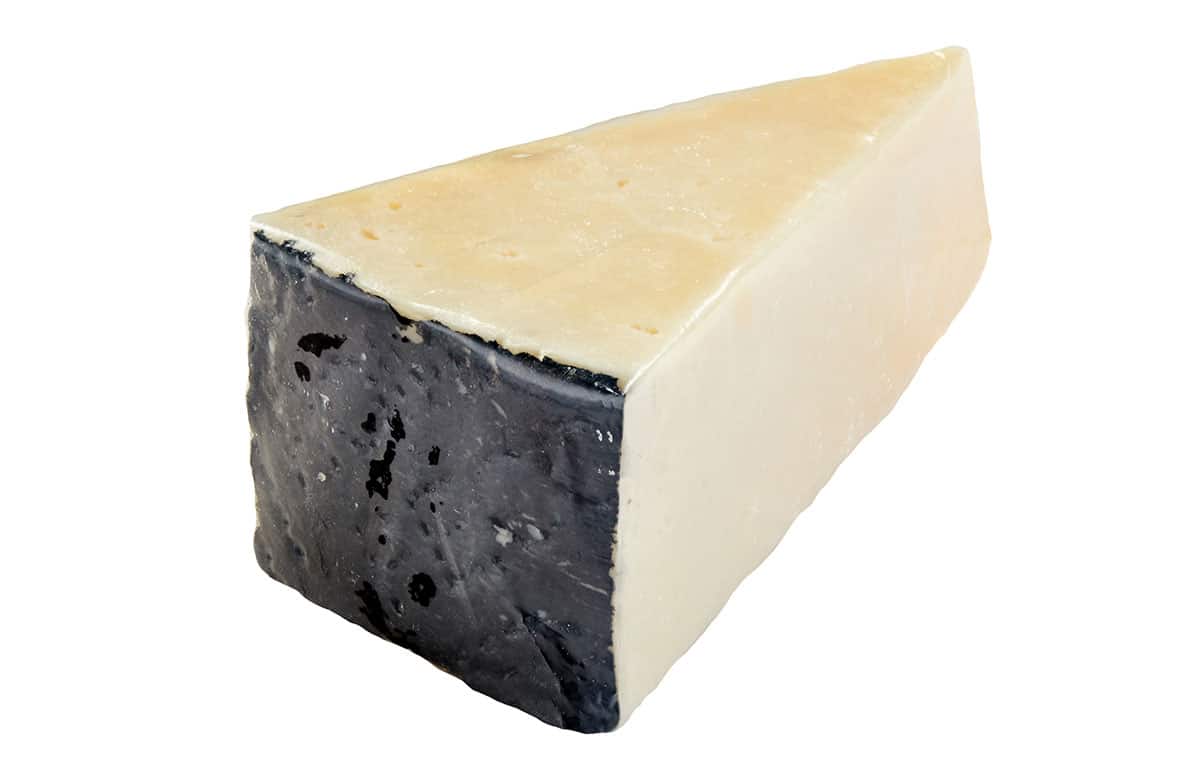
Roquefort
This French cheese is the most pungent and strongest of all the blue cheese variants. If you like the pungent aroma and taste or this type of cheese, Roquefort is for you. It can be used in any recipe calling for a blue cheese as long as you are ready for its strong taste. Use it on a delicious Wedge Salad.
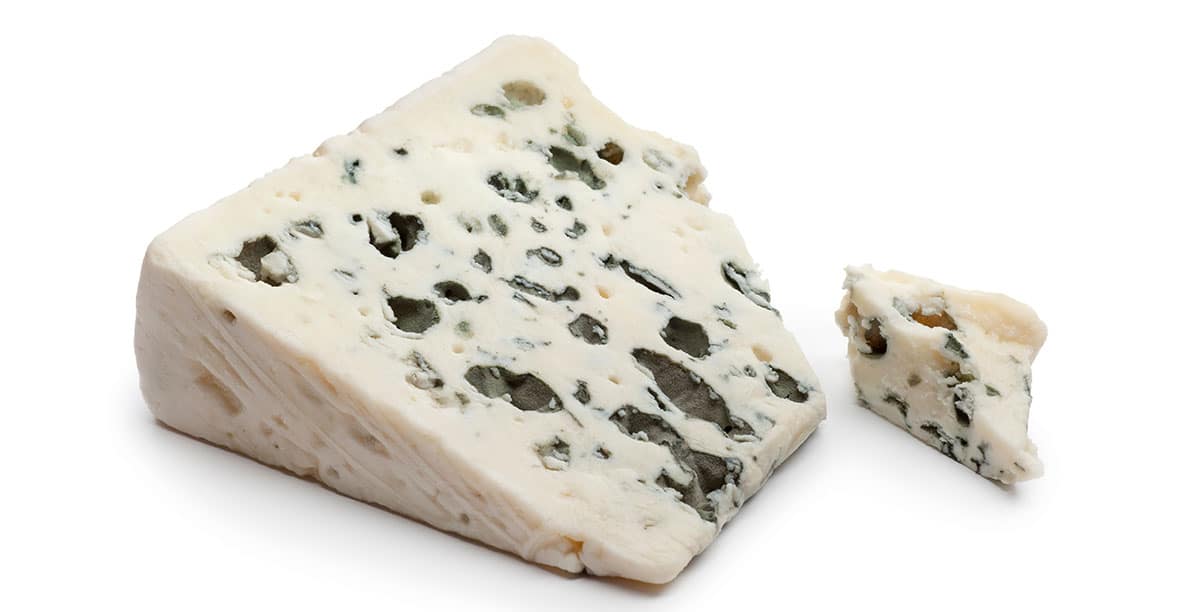
Sakura
Sakura is our one Japanese cheese on the list. I won’t lie, we had not previously heard of it or any cheese from Japan which is why we researched Japanese cheese. Cheese making and consumption in Japan are, to say the least, a recent phenomena. 100 years ago Japan consumed less than 1 gram of cheese per person each year. So in a town of 1,000 people they only ate about 2 pounds in a year between them all. Sakura was developed on the Miyajima Farm in 1974 by a family trained in cheese making at the Wisconsin State University. The cheese is a camembert style cheese washed in sake and packaged in bamboo leaves grown on the farm. We couldn’t even find this cheese on Amazon, but thought it worth publishing for interest more than culinary purposes.
Sirene
Sirene is sometimes called Bulgarian feta. It is produced and popular throughout the Balkan Peninsula as well as Greece and Israel. This brined cheese is rather salty and made from cow, sheep, or goat’s milk. It is known for its sharp taste and strong aroma. Try it in this Feta Tzatziki Sauce if you want a sharper taste than feta would provide, or perhaps this Greek Baked Feta to remain in keeping with the regional origin of this cheese.
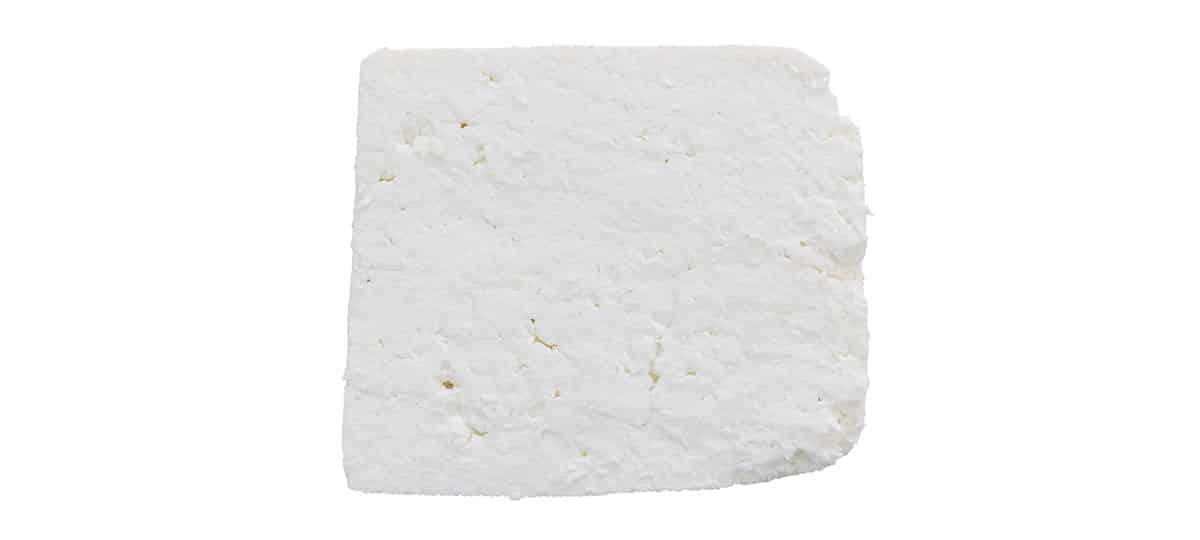
Stilton
Stilton was developed in England in 1720 and is still made today in the English town of Stilton. It is a “blue cheese” variety made with penicillium roqueforti, but there is also a white version without the penicillium which gives the blue cheese variant the well known blue veins and pockets. It is milder than roquefort, but not as mild as Blue Danish or Gorgonzola. Stilton cheese is only made in Leicestershire, Nottinghamshire, and Derbyshire in England. Additionally, only seven dairies are licensed to make it!
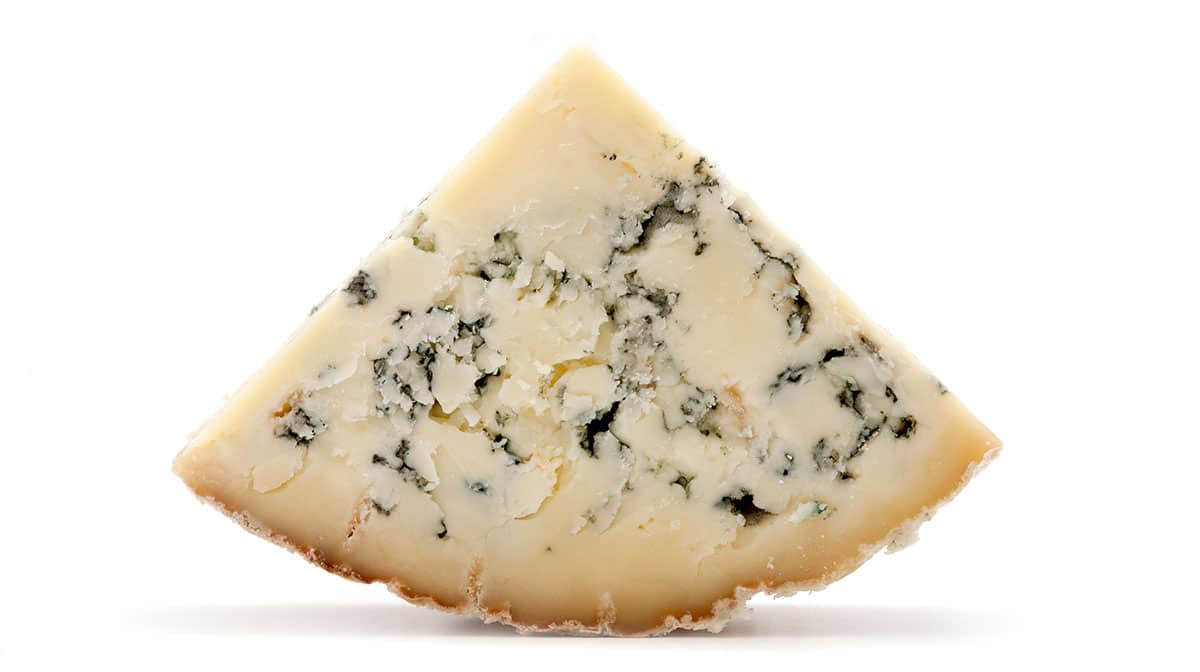
String Cheese
Some may not consider string cheese a cheese type. It is, after all, just mozzarella packaged in a convenient stick. String cheese, however, is great for a lot of applications. Throw it in school lunches, take one on your next hike, bring it along on a car ride, or our favorite put it in your mobile charcuterie tray!
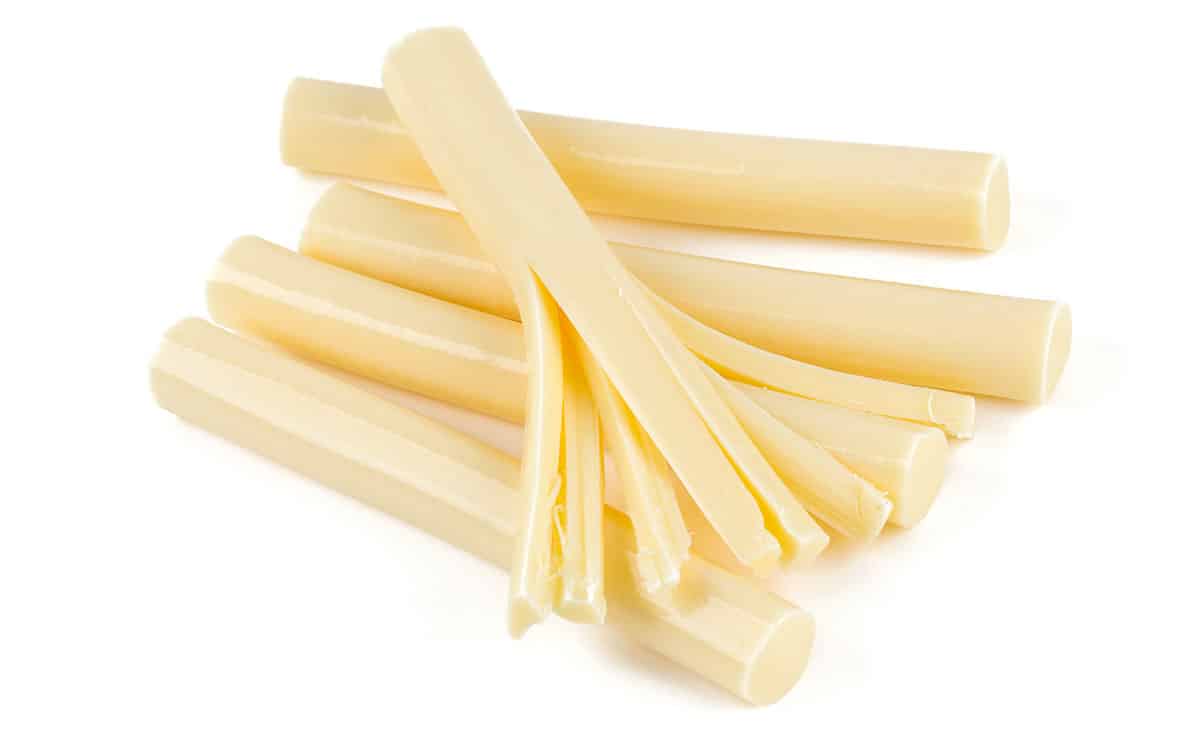
Swiss
Swiss cheese is really the American generic name for the type of cheese that resembles Swiss Emmental cheese. It is pale yellow with the characteristic holes (eyes) caused by the bacteria propionibacteria (props) used in its making. Swiss cheese has many traditional uses such as in cordon bleu, over pasta, or on any cheese cheese board. Swiss cheese is the 4th most consumed cheese in the United States making up 7% of production.
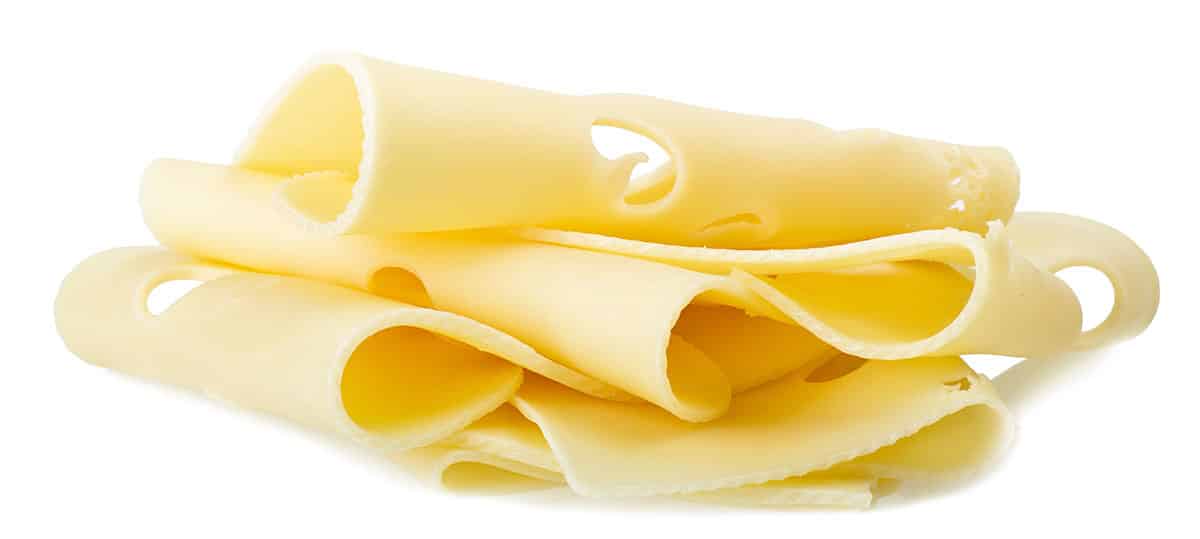
Trivia Answer
You generally need about 10 lbs of milk to make 1 lb of cheese!
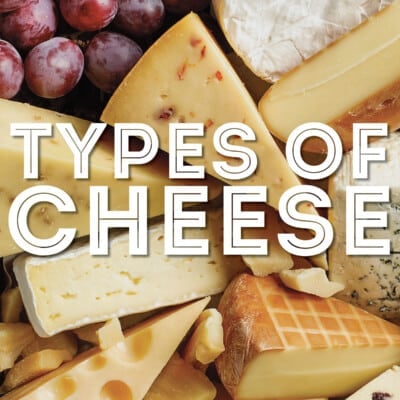
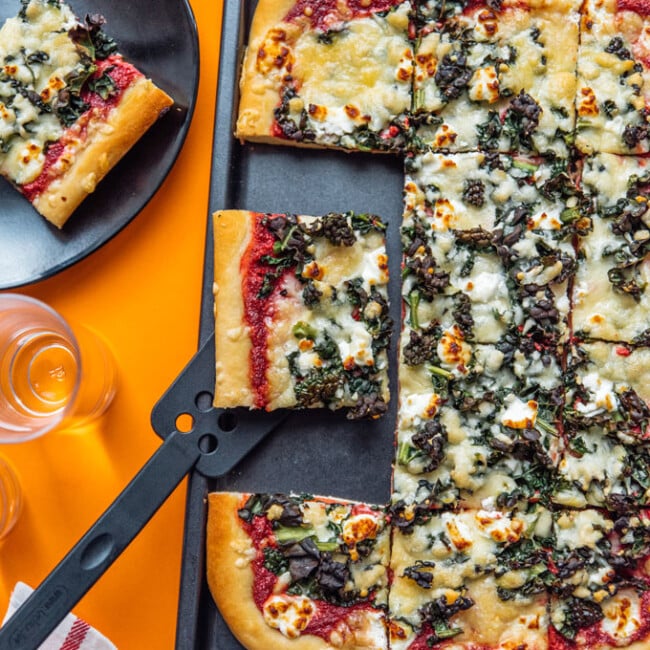
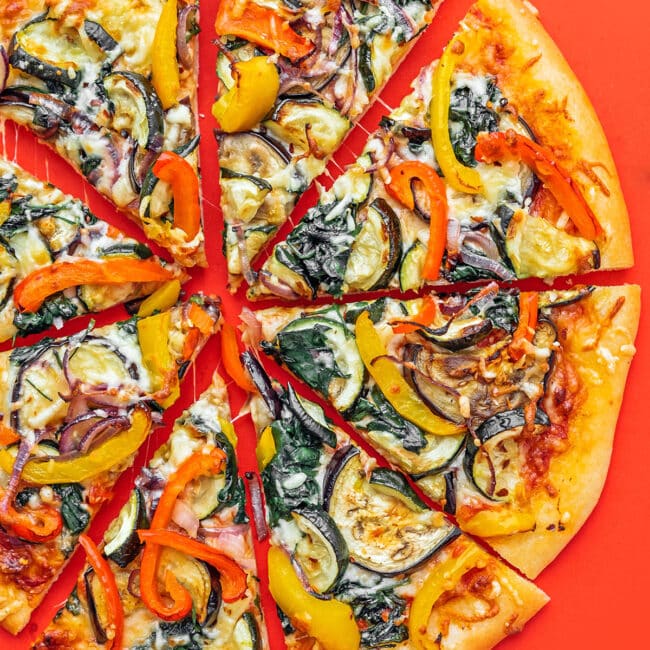
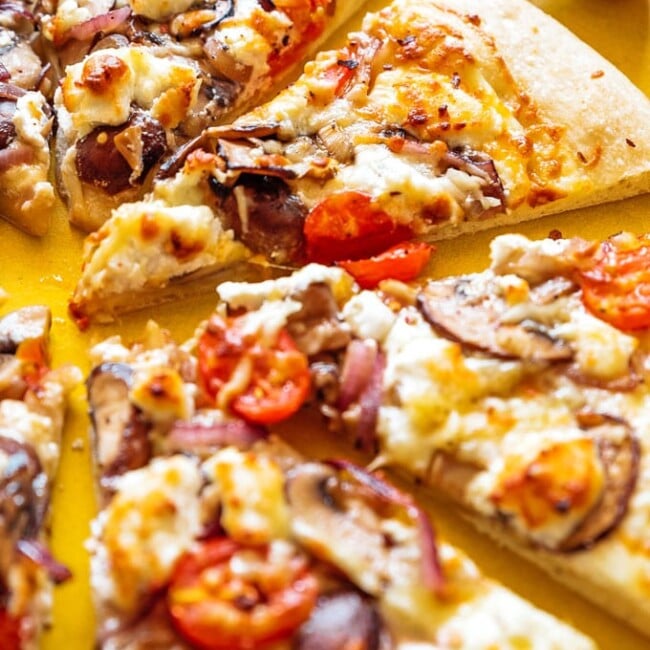

JOnathan says
Sarah, thank you for this concise and informative post. I learned something new about one of my favorite foods – Cheese!
BTW, many (though not all) of these cheeses are available in the U.S. at Trader Joe’s in quantities that are smaller than you might have to purchase at Costco, but still very reasonably priced. It’s worth checking out if there is a Trader Joe’s near you. I am looking forward to trying the accompanying recipes as well.
Sarah Bond says
Such a great tip – thanks for sharing Jonathan! 😀
Bonnie Sagers says
I am looking for a sap sago cone cheese.It is about 3 ounces.I have been looking for this cheese for years.I ask about and store act like I’m crazy ,they never heard of it.My grandma use to get it and it became my favorite type of cheese.Could u please help me get it?
Sarah Bond says
Is it something like this?
Brian Robins says
You are right that Stilton cheese has to be made in Nottinghamshire, Leicestershire or Derbyshire, and that there are only seven licensed producers, but the village of Stilton is not one of them, and is in Cambridgeshire! The man who developed the cheese was travelling up the Great North Road (today’s A1), saw the name on a signpost and thought it would make a nice brand name!
Kathy says
I once tried a Canadian made cheese that had a “stinky” exterior, but was quite tasty. I guess it was a “washed rind” type. I would love to find it again. I found it in a fancy grocers in North Carolina in the 1980’s.
Sarah Bond says
Could it have been Oka cheese?